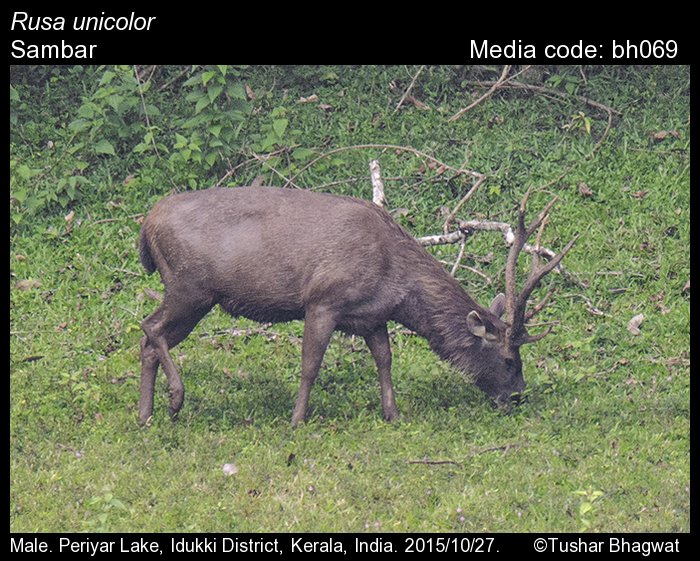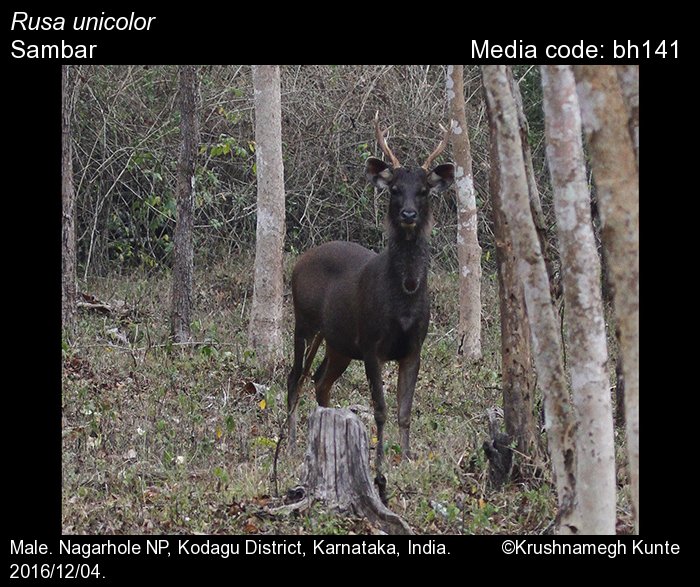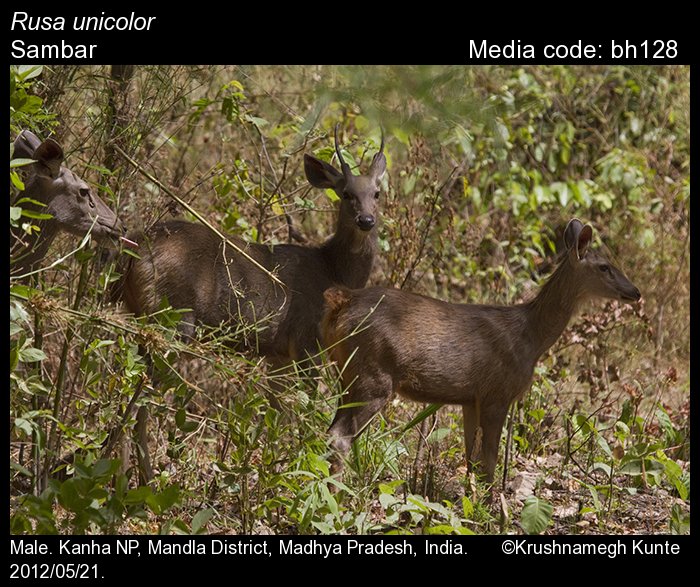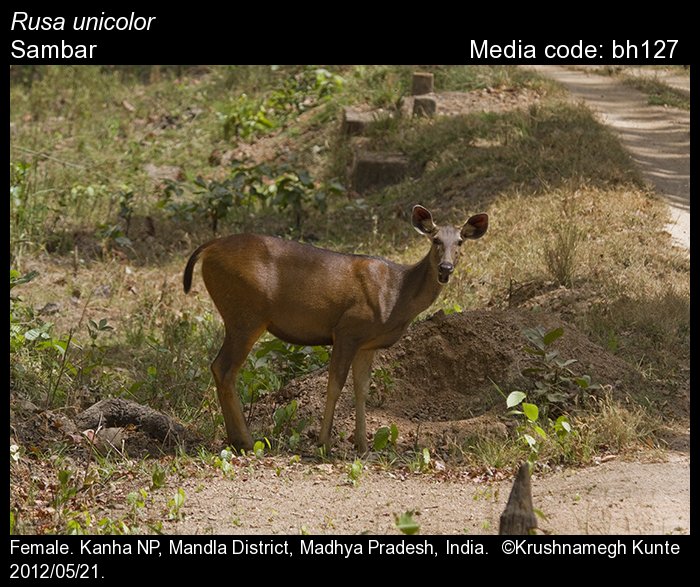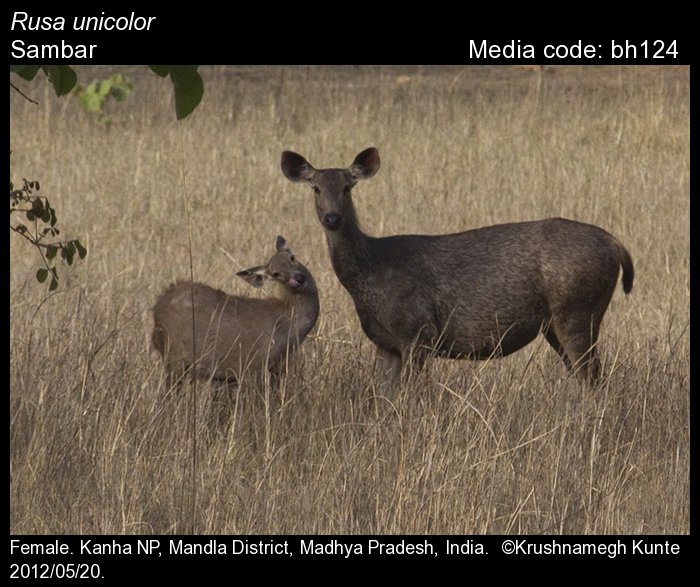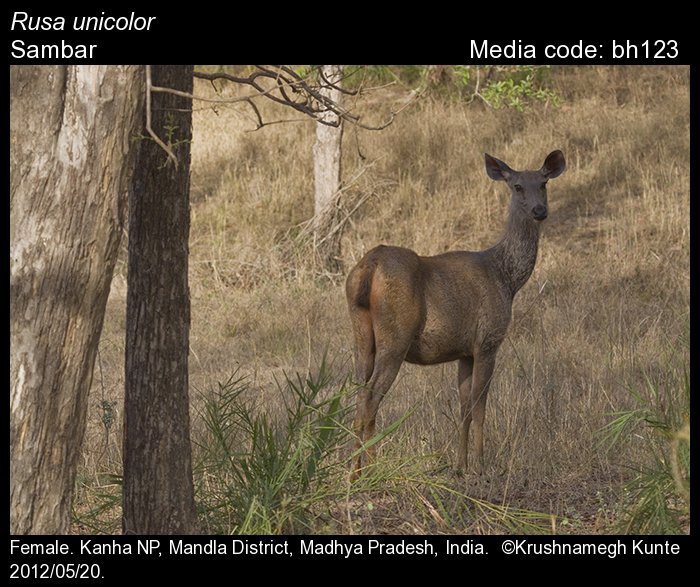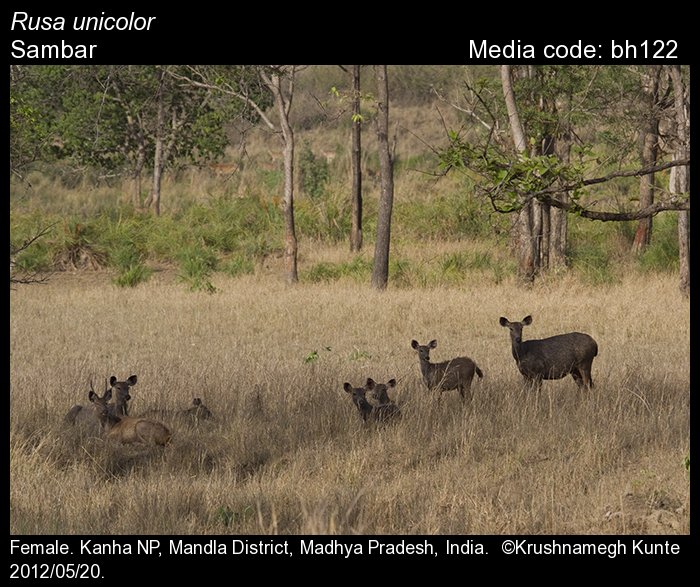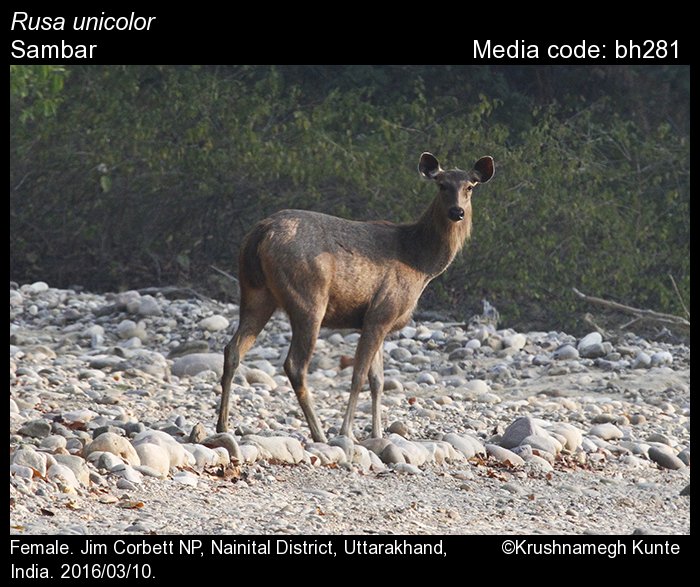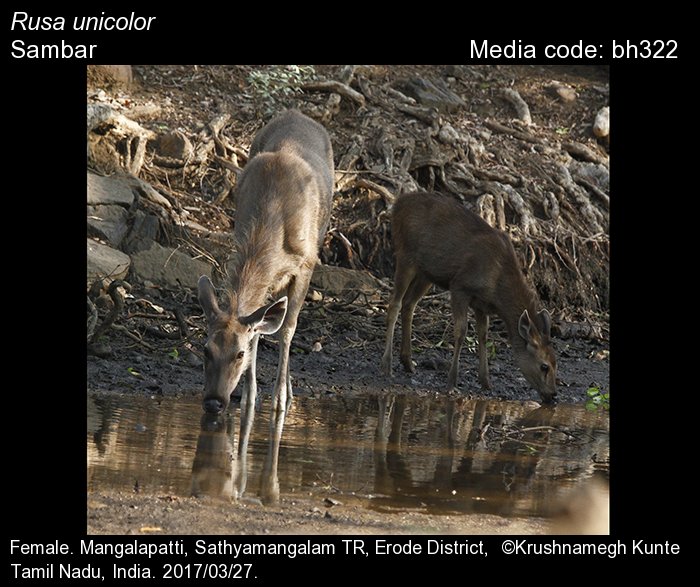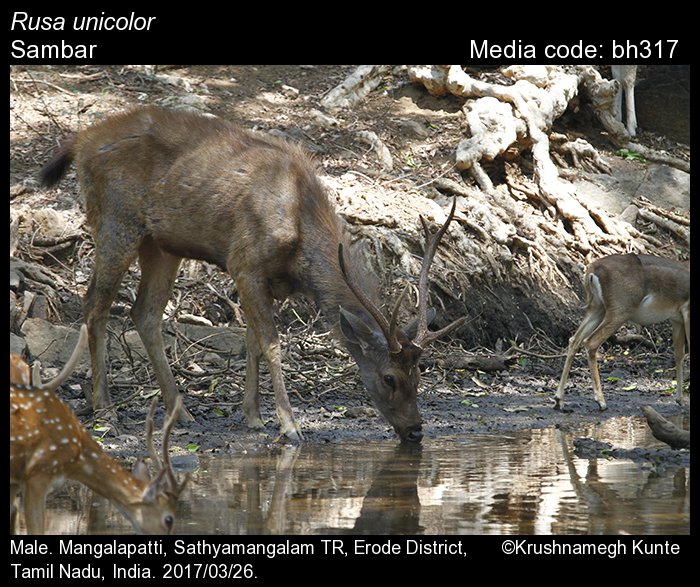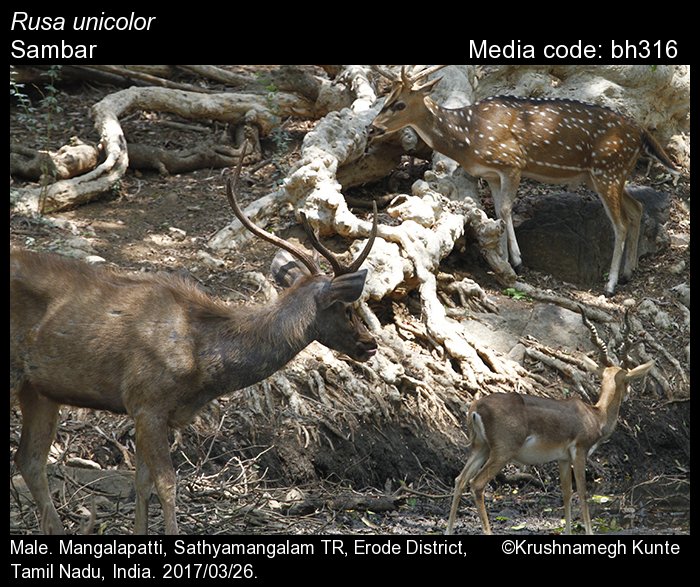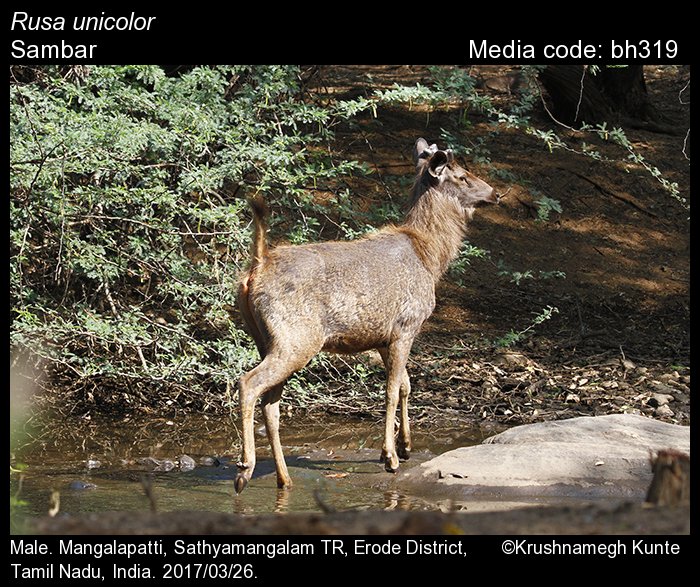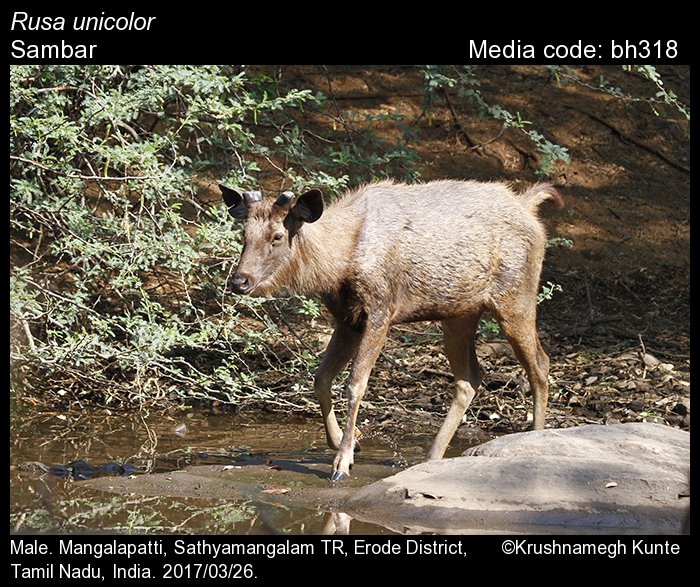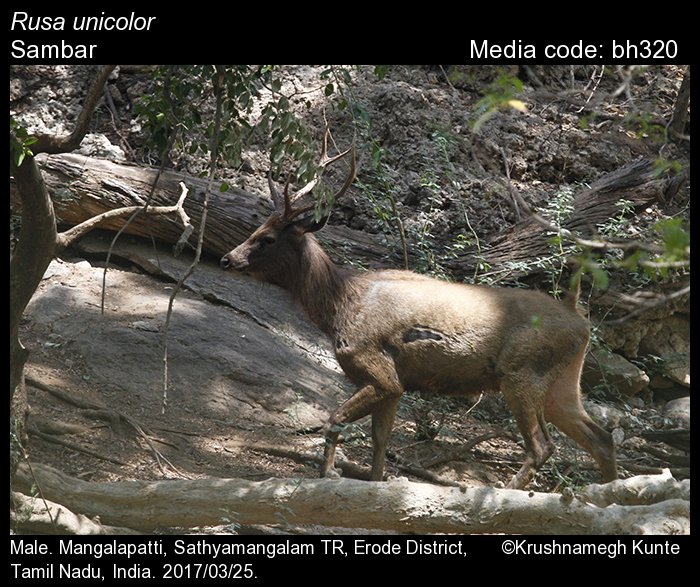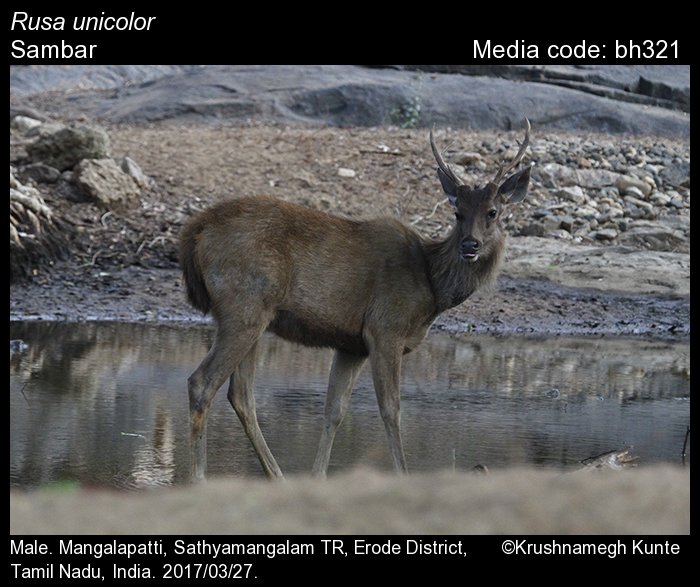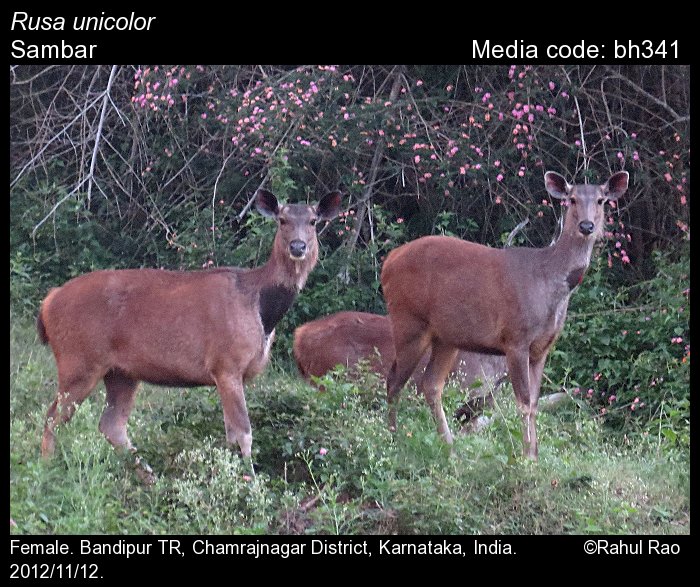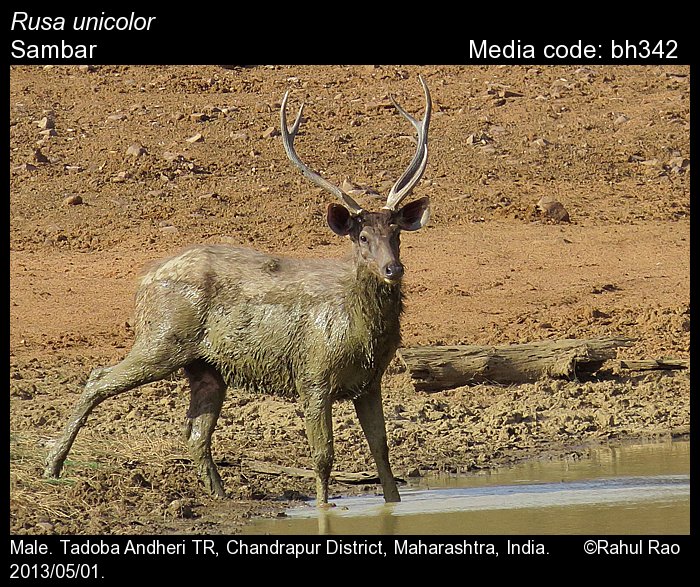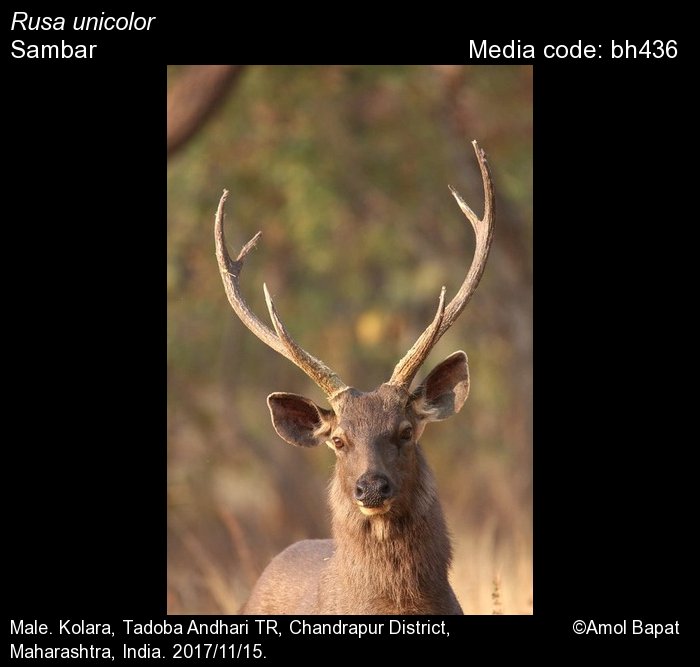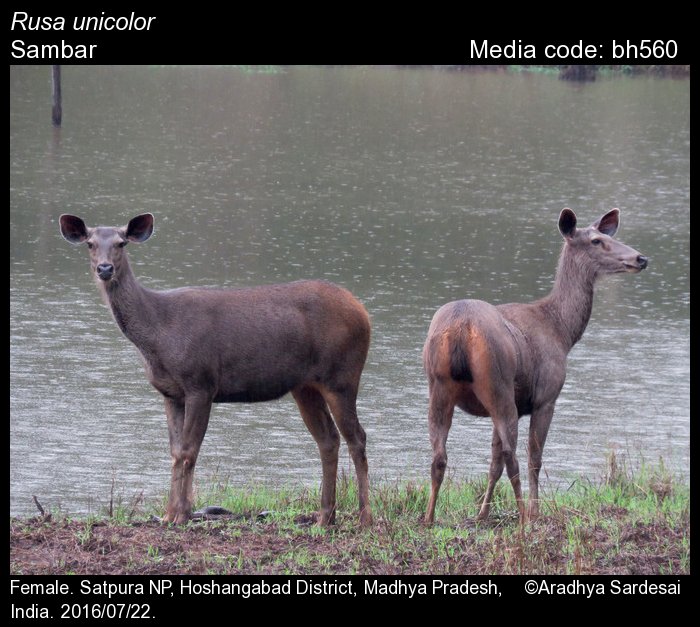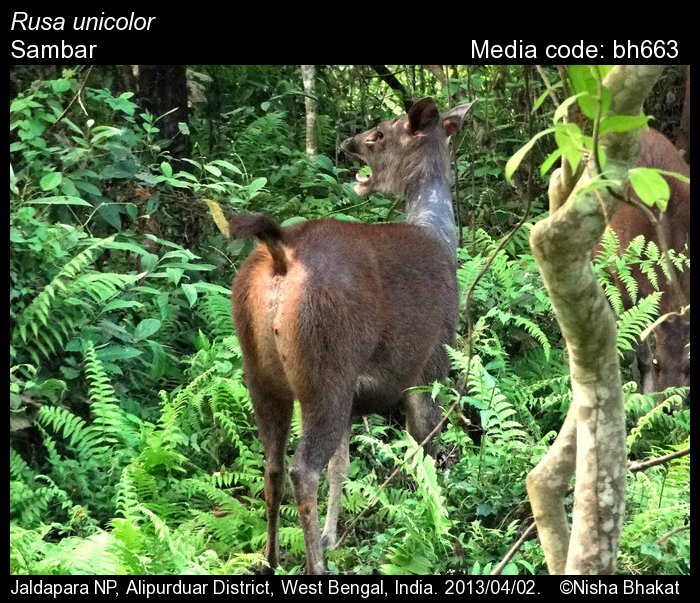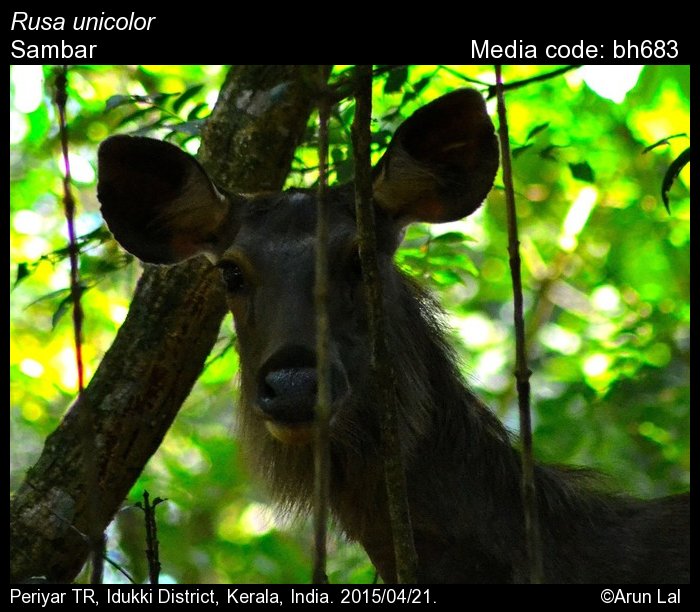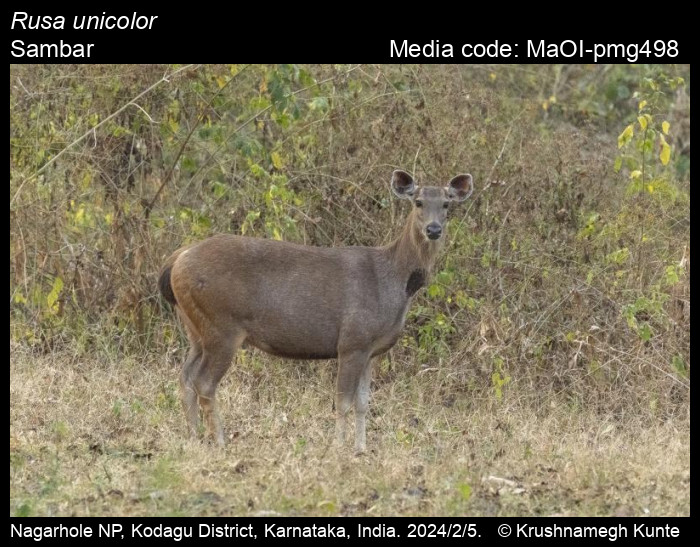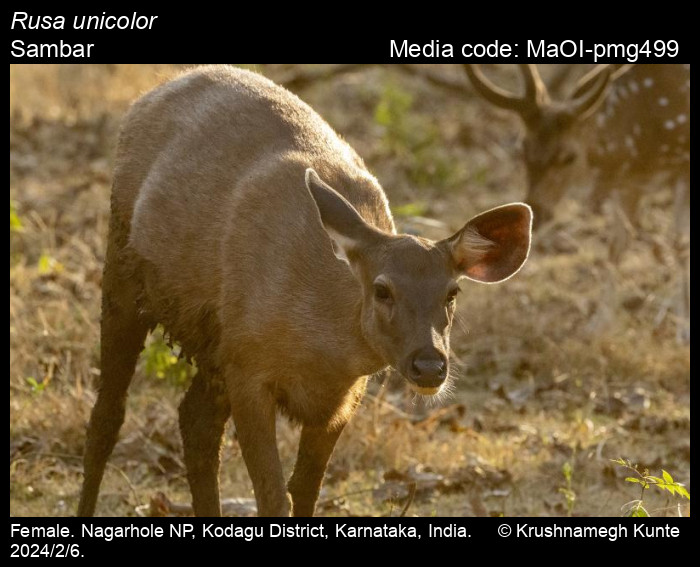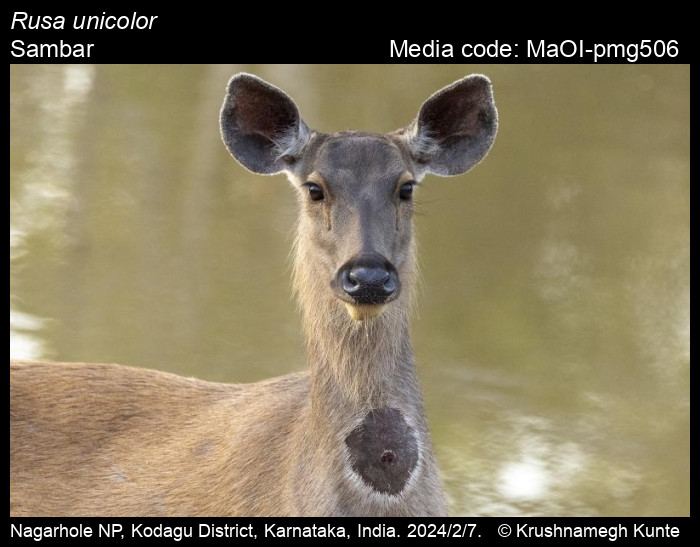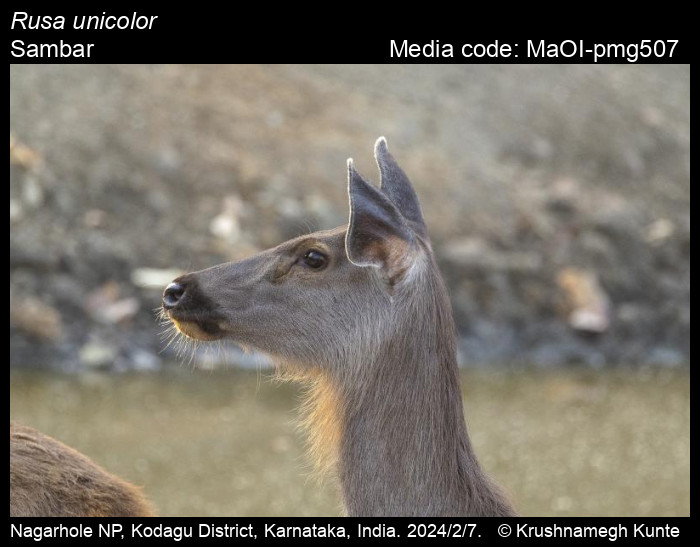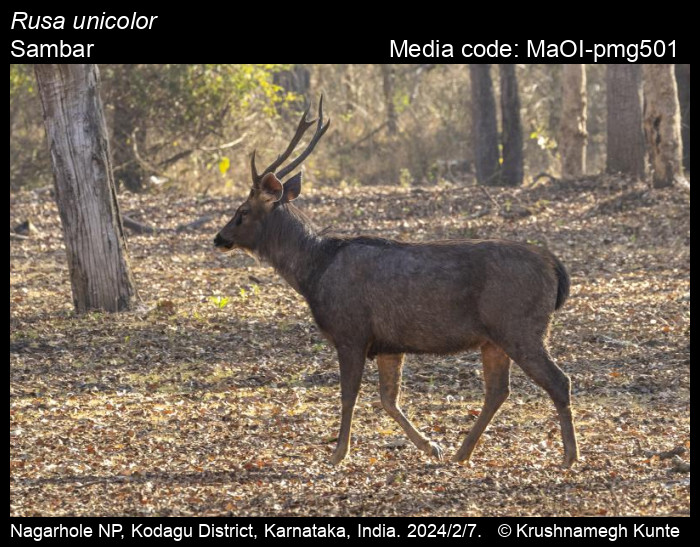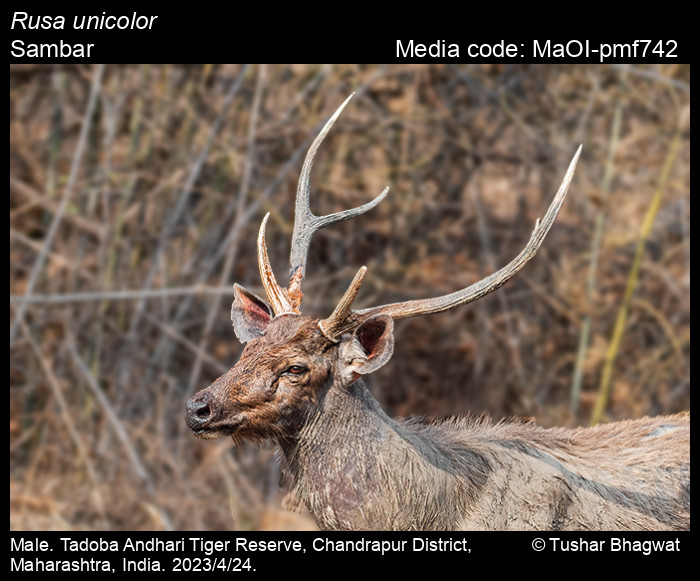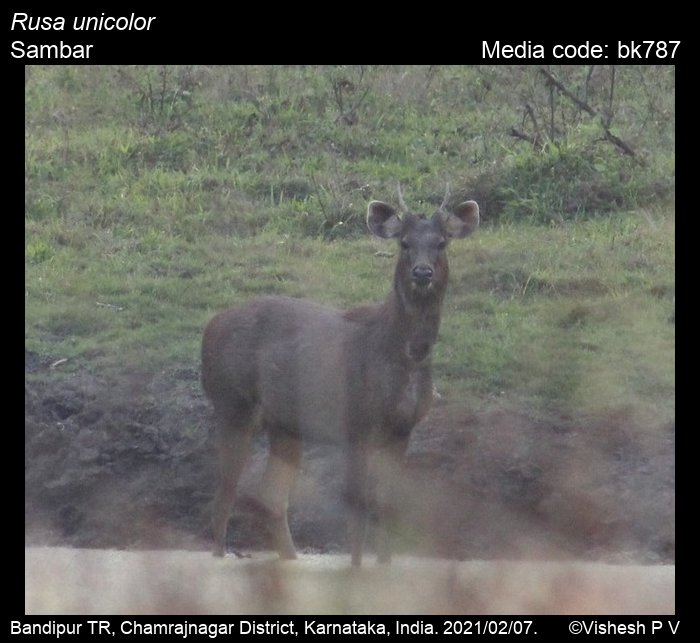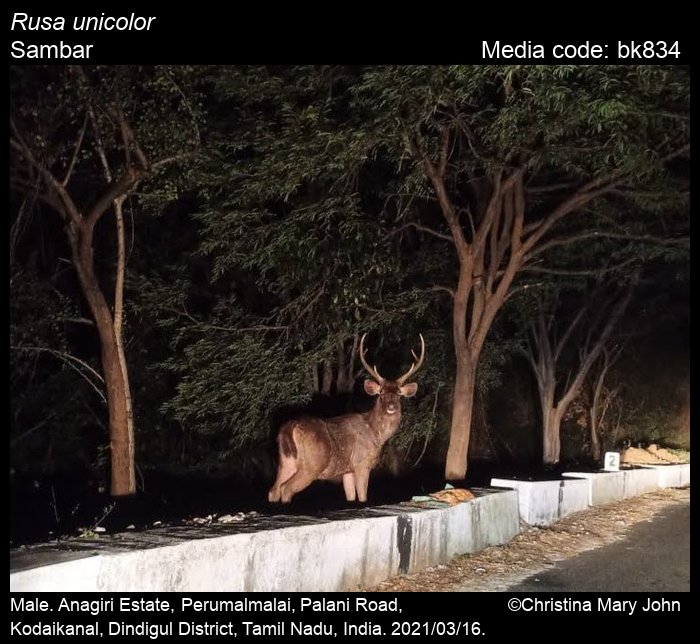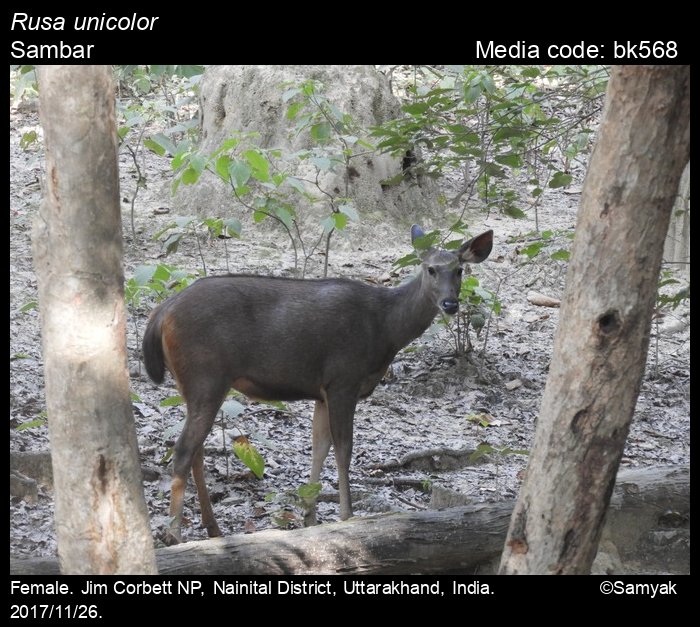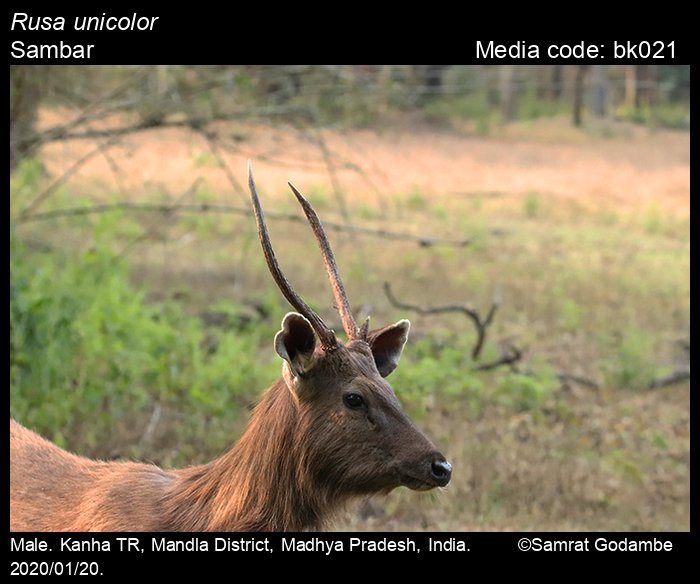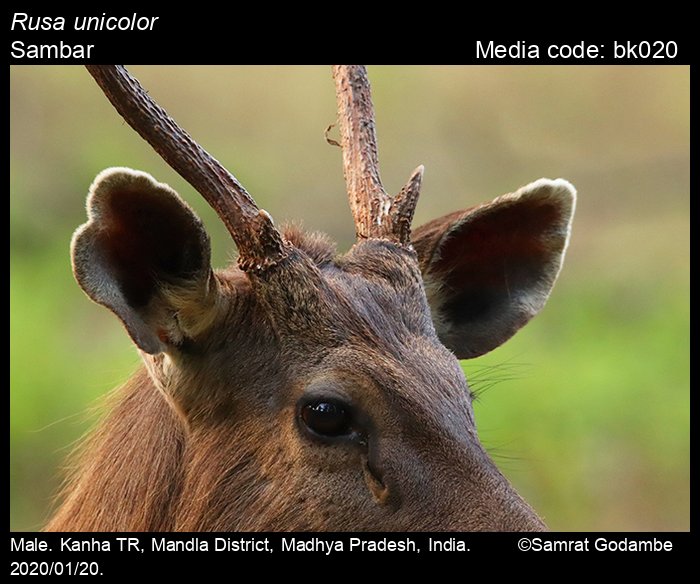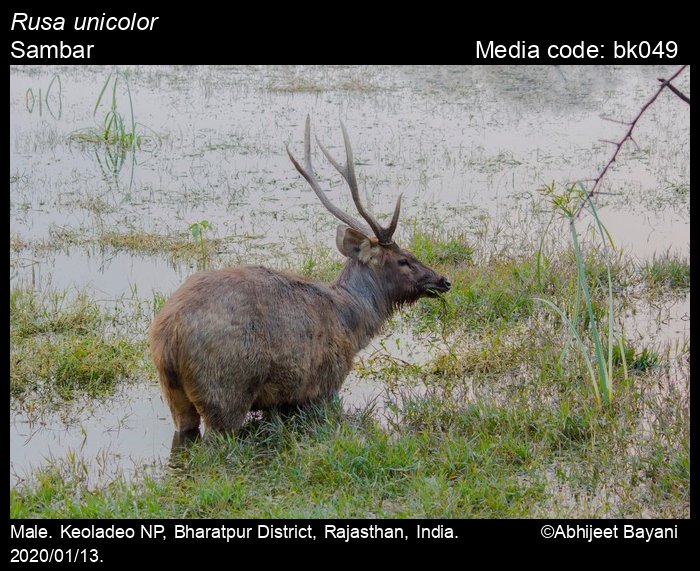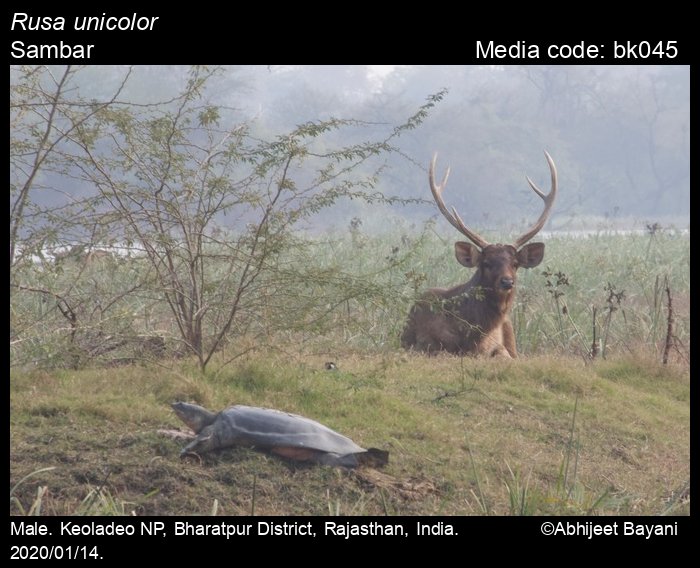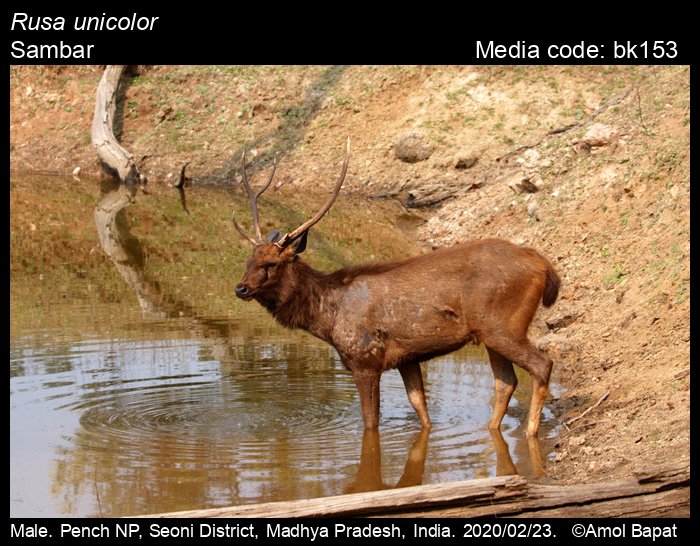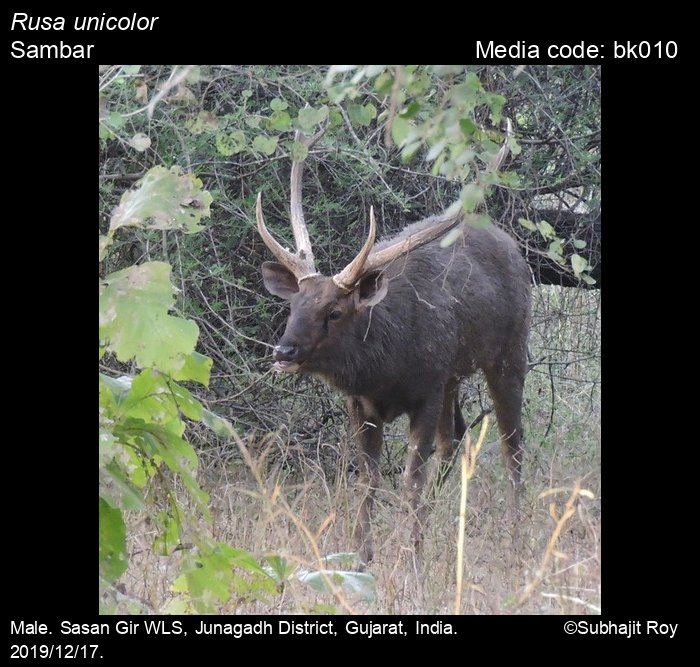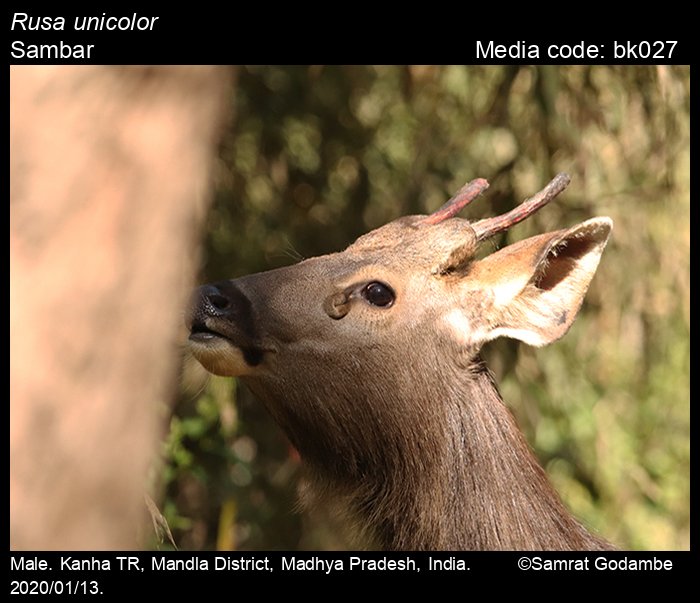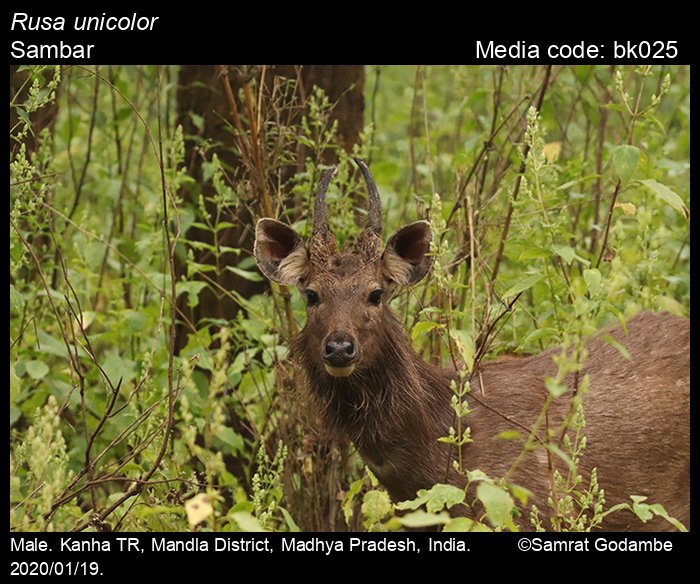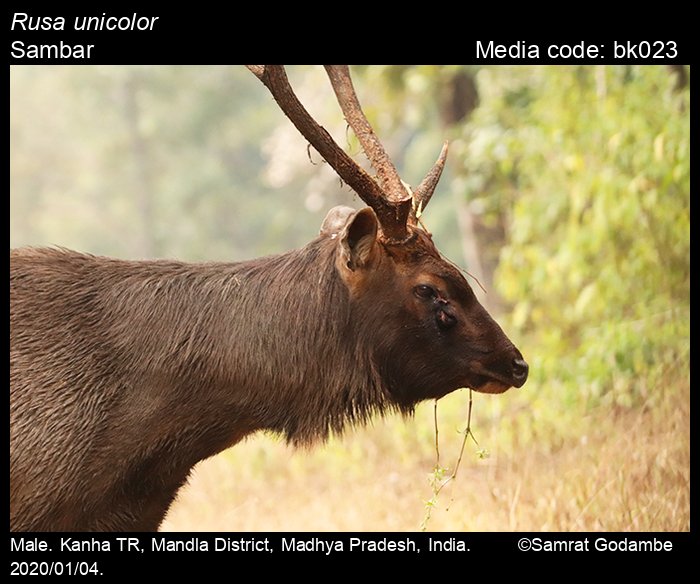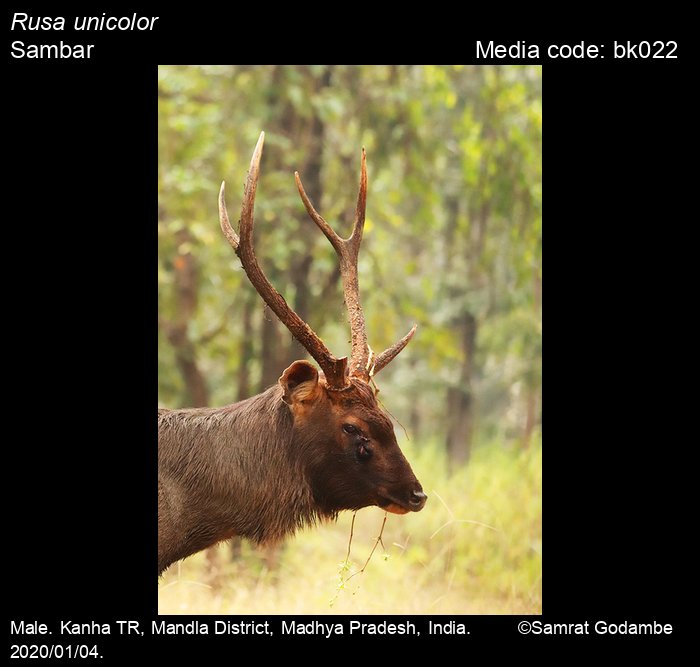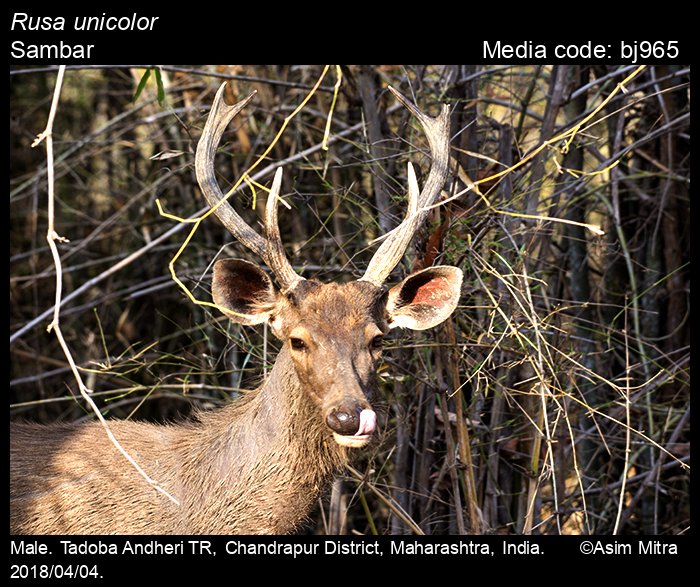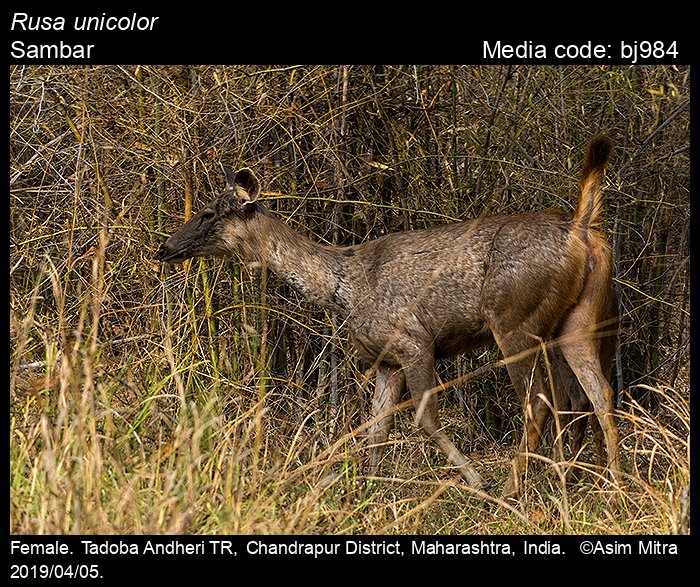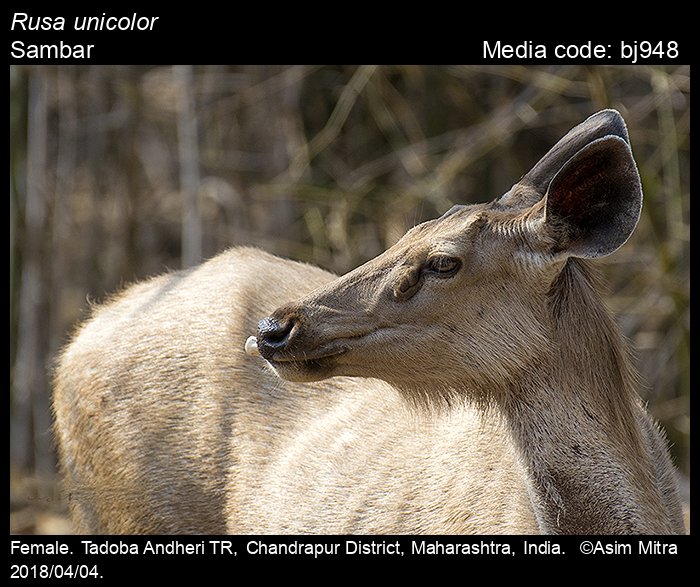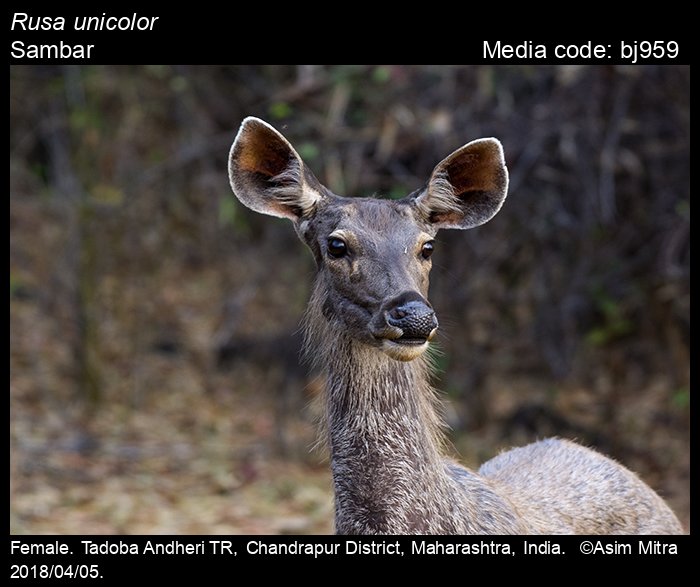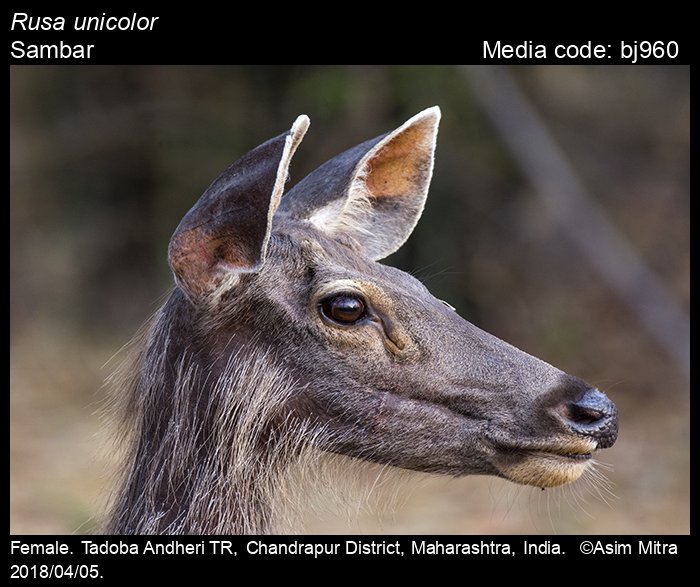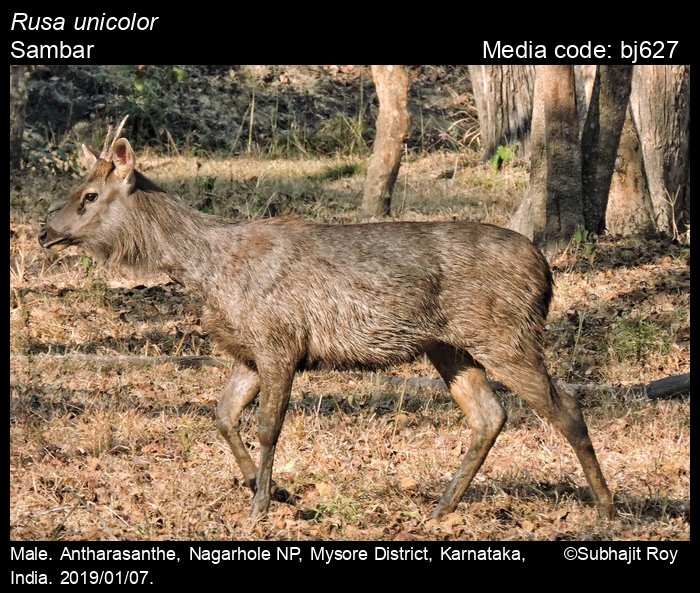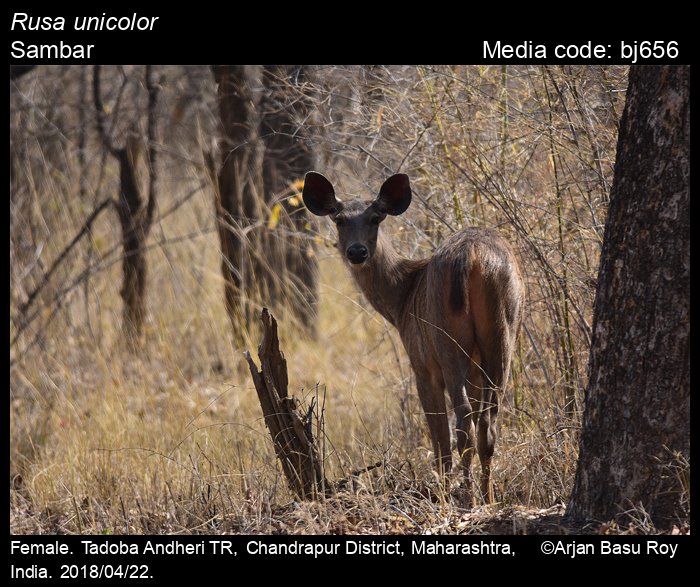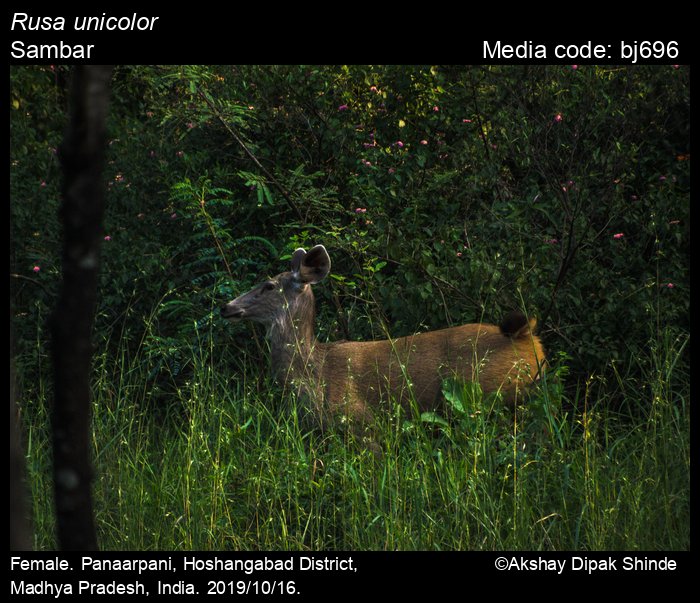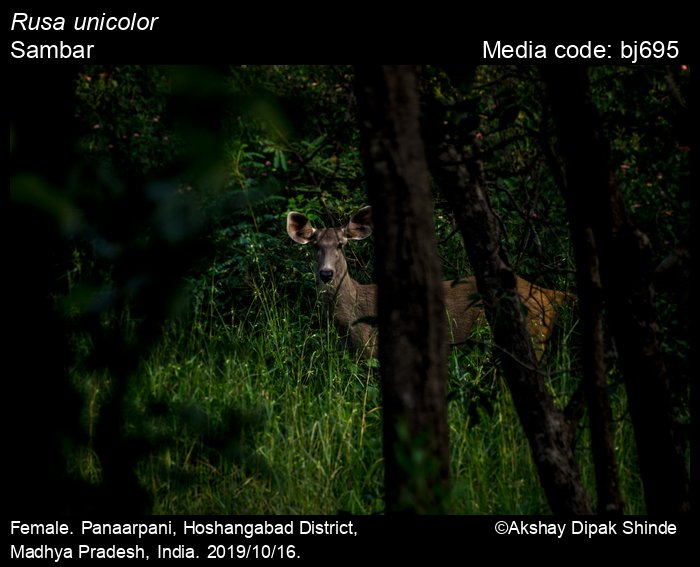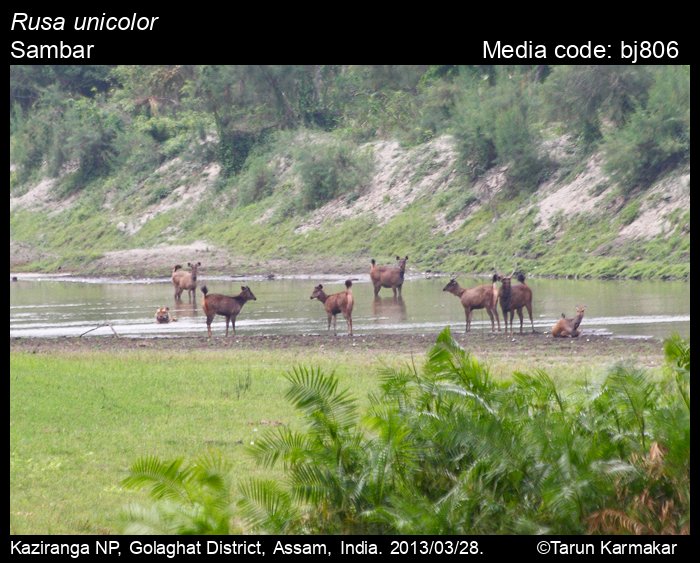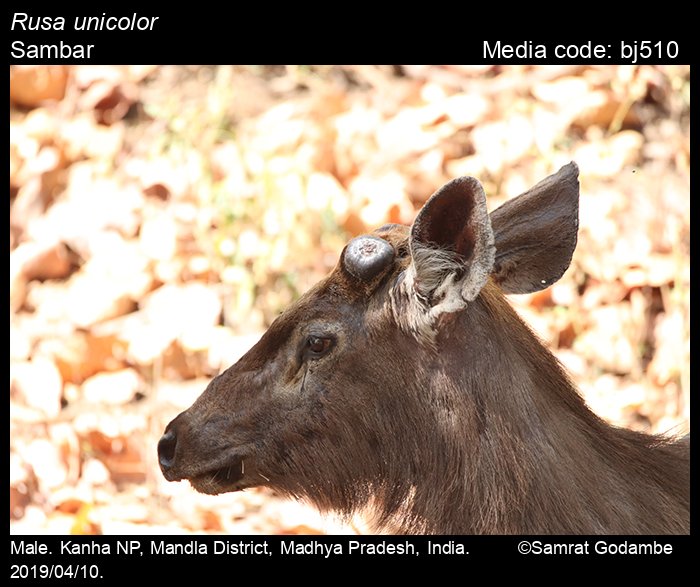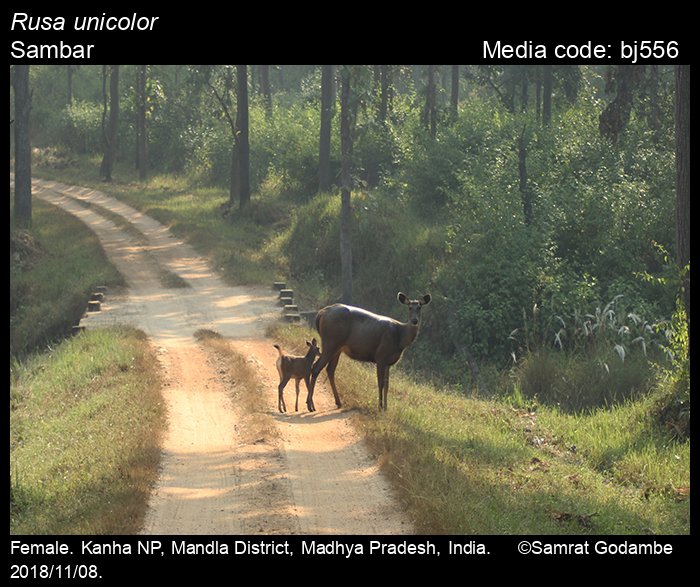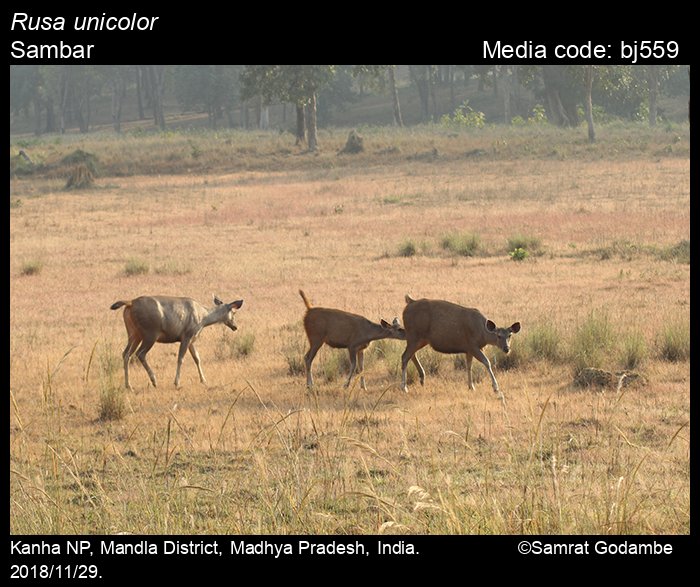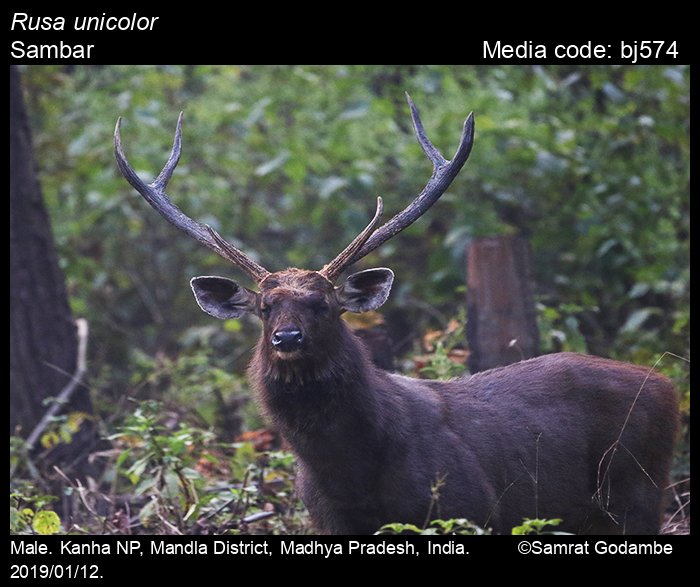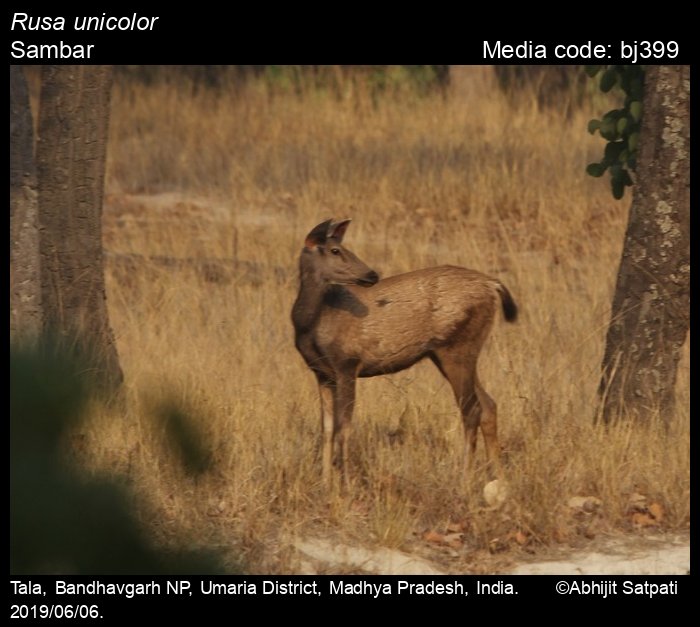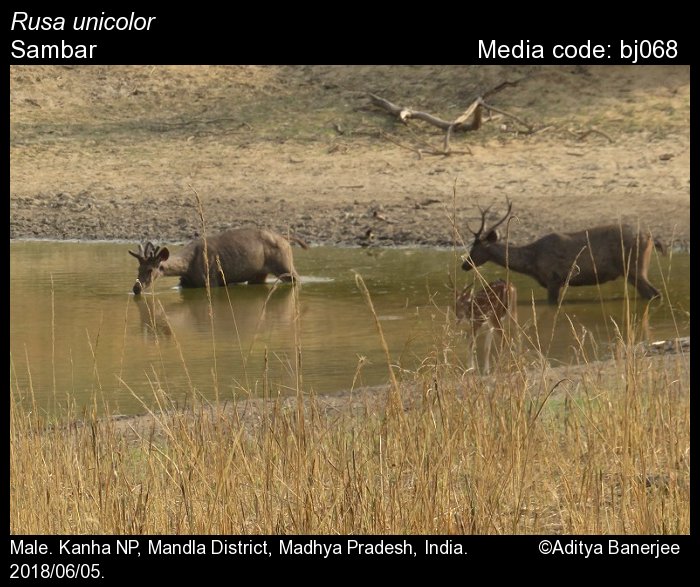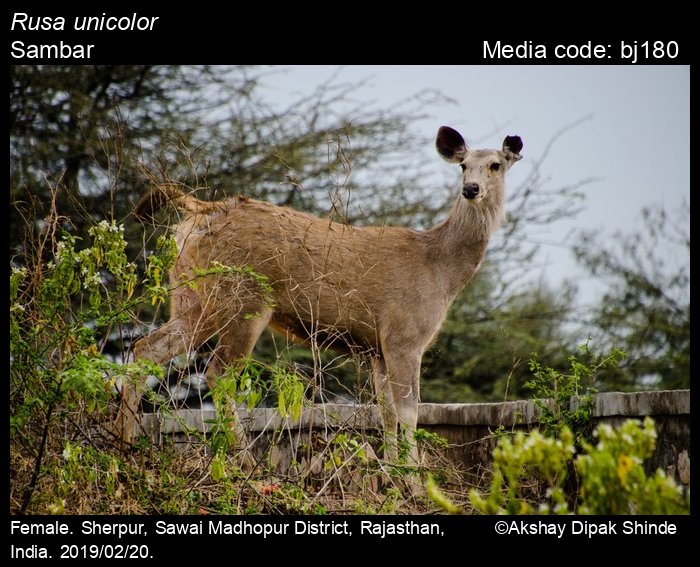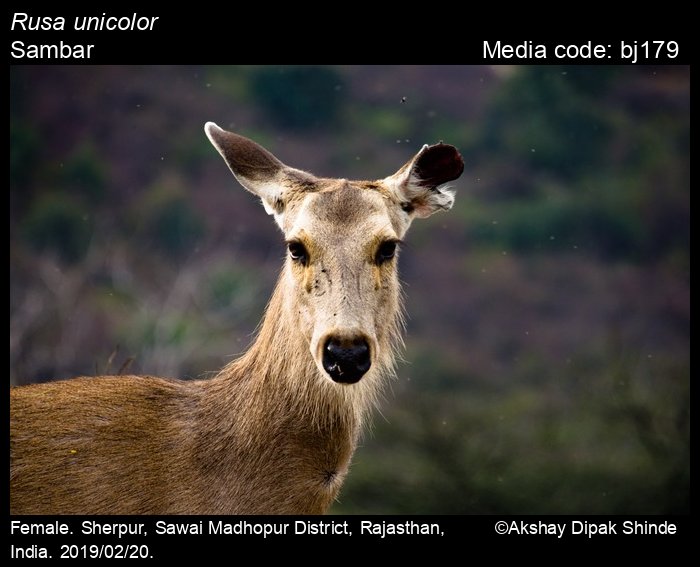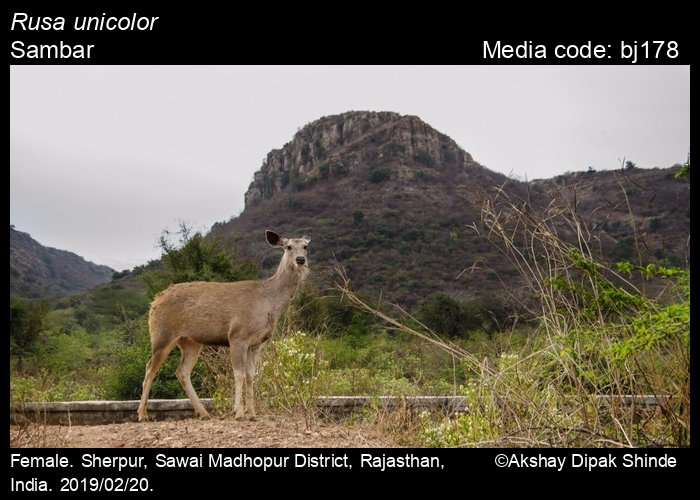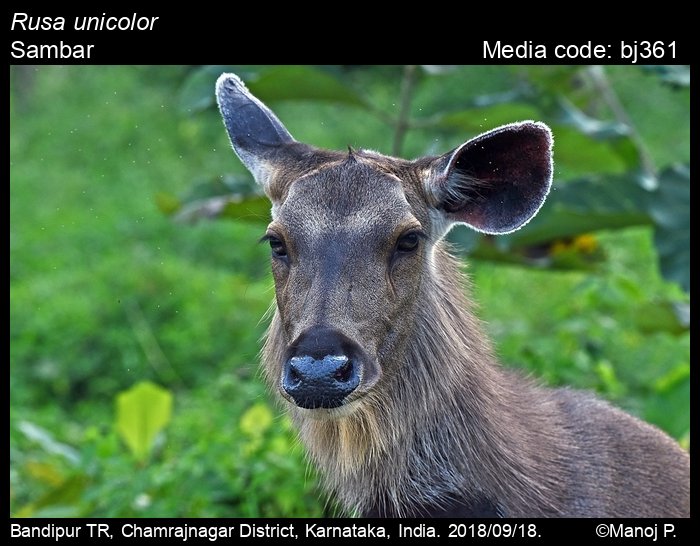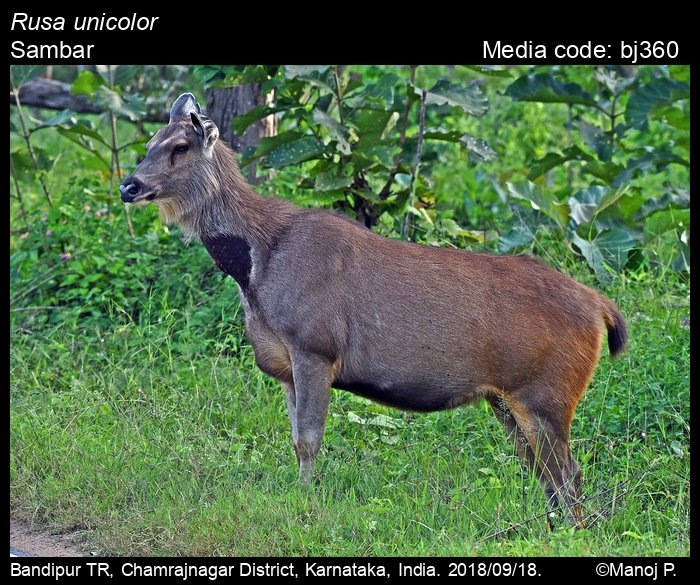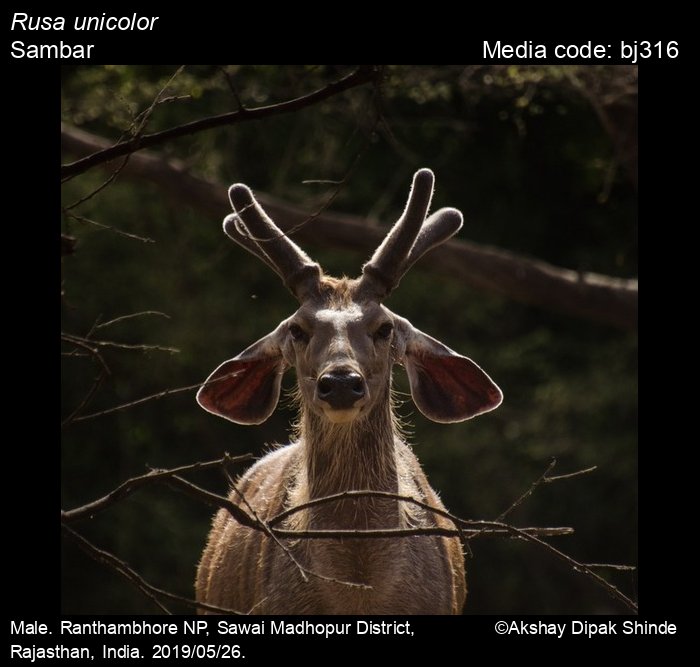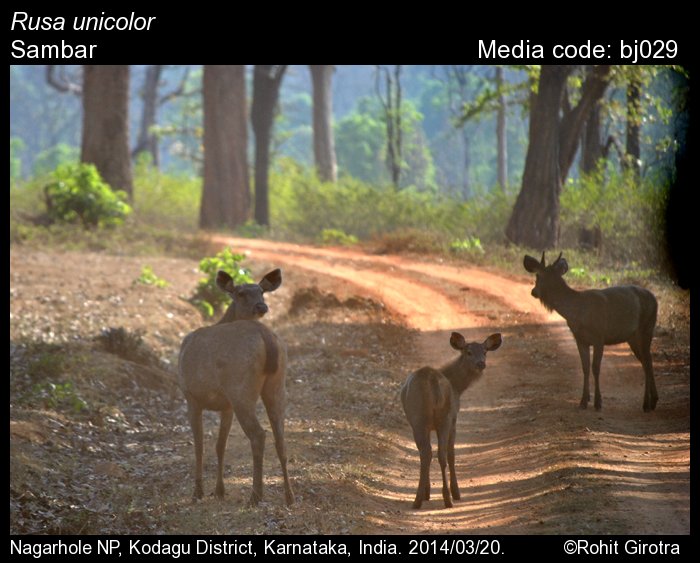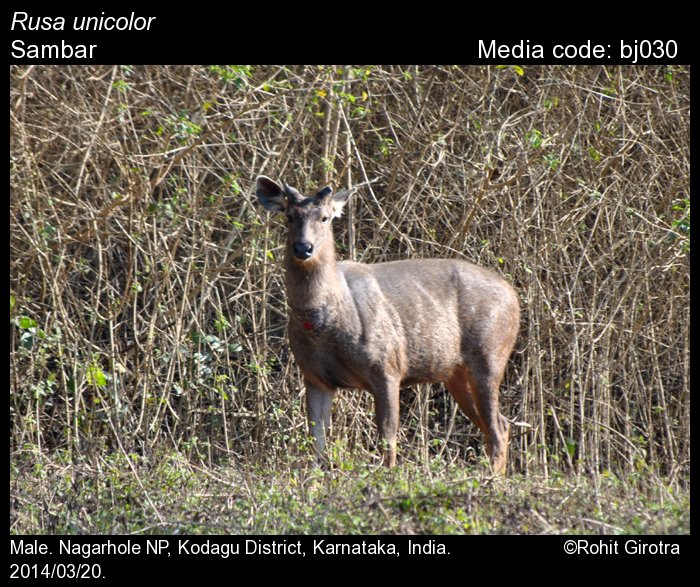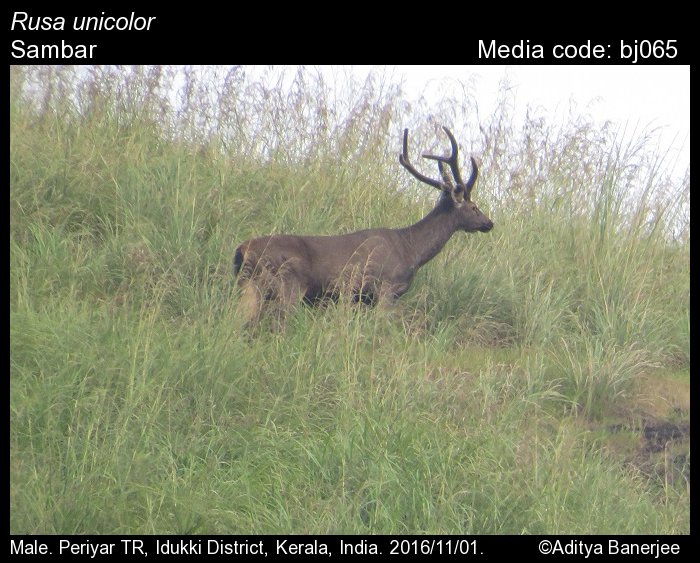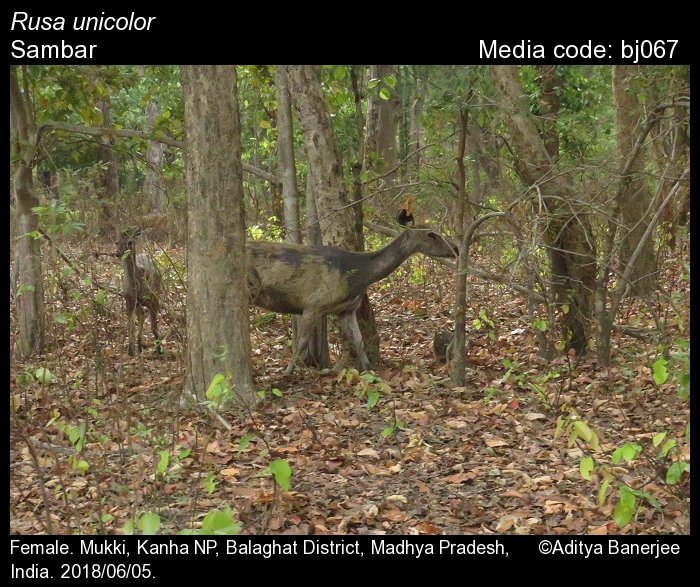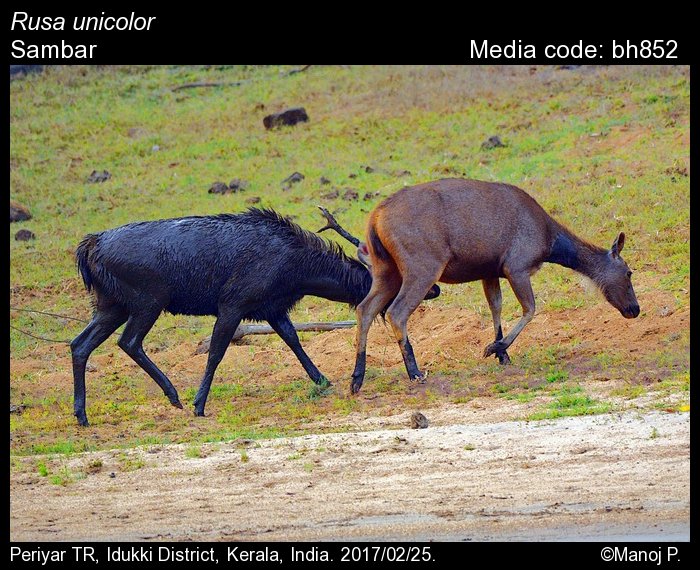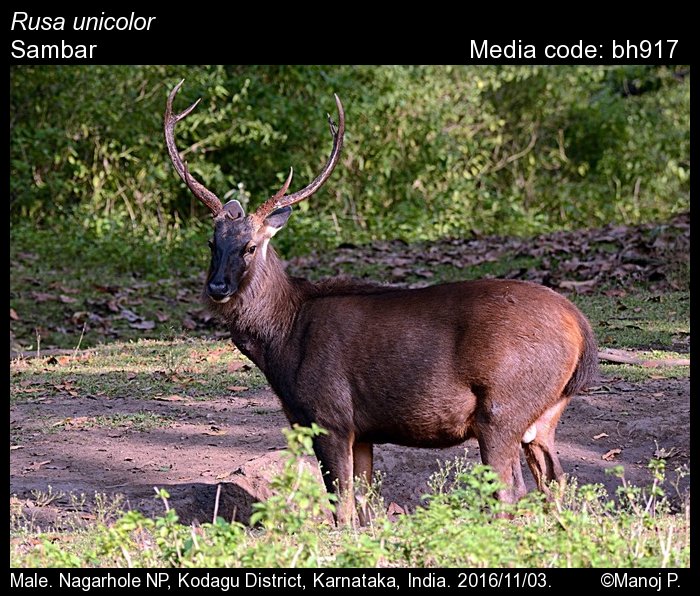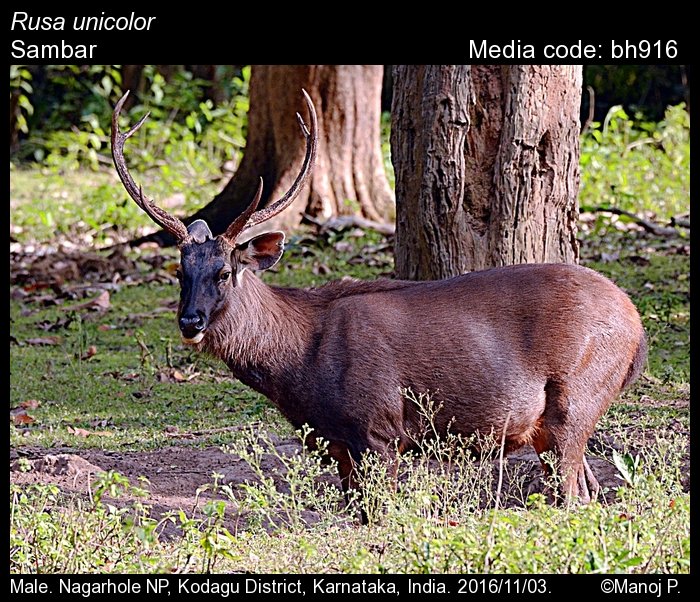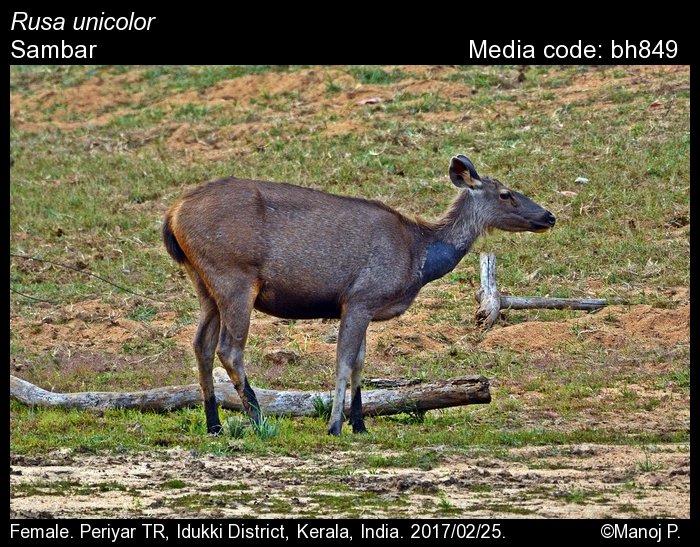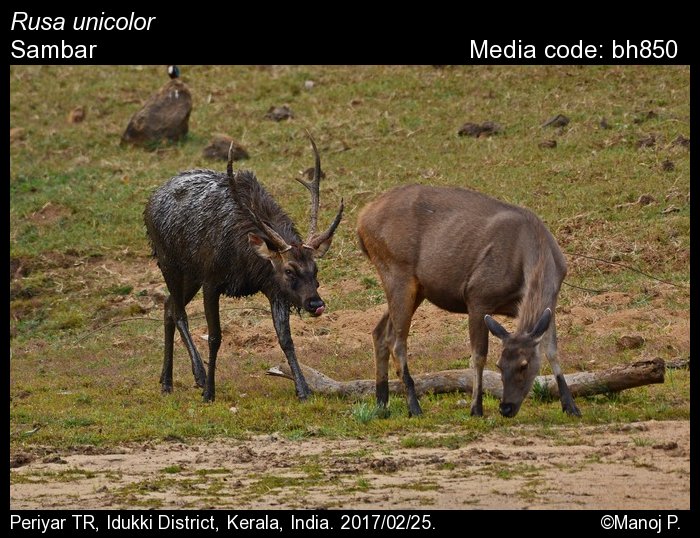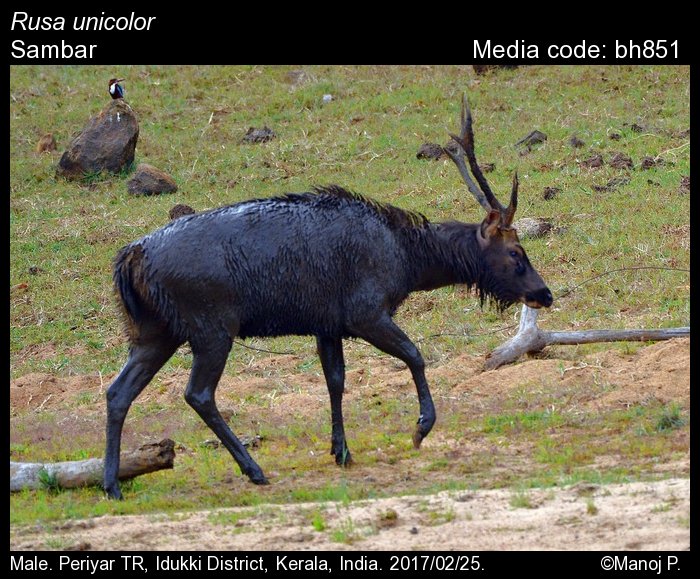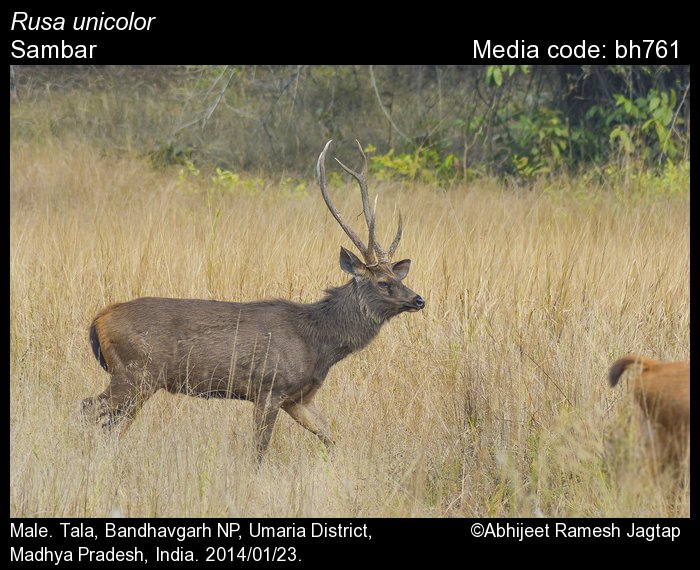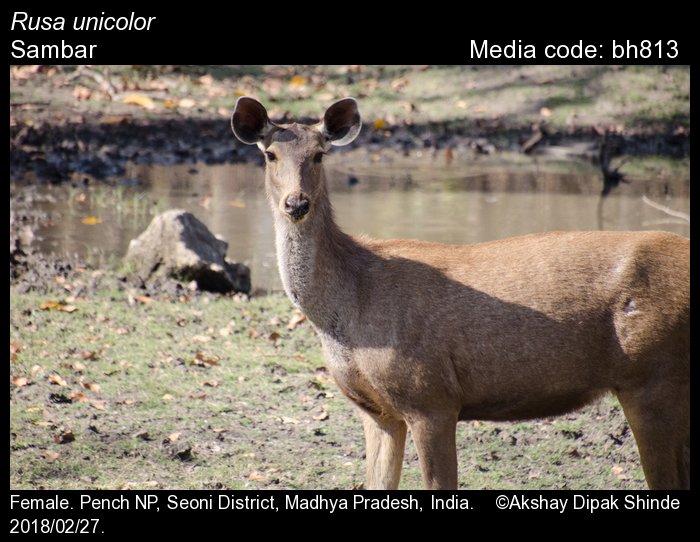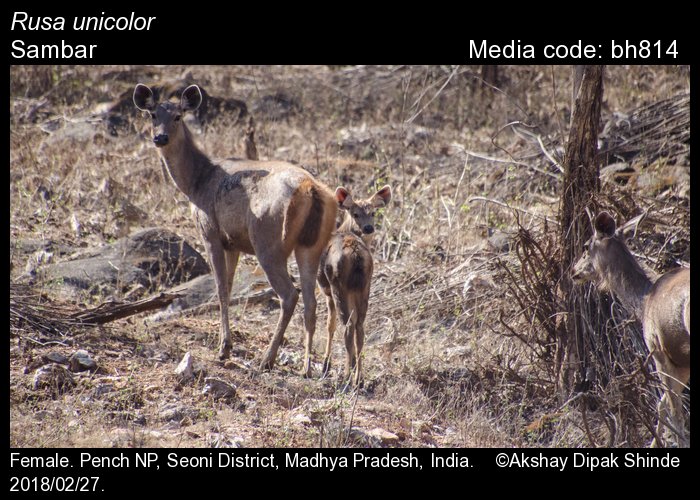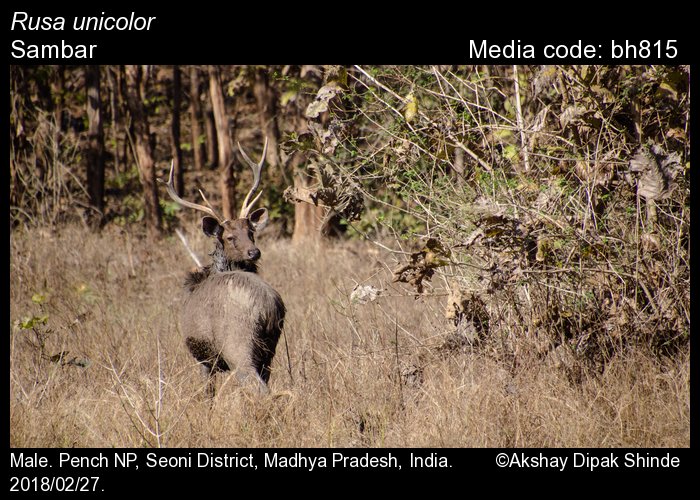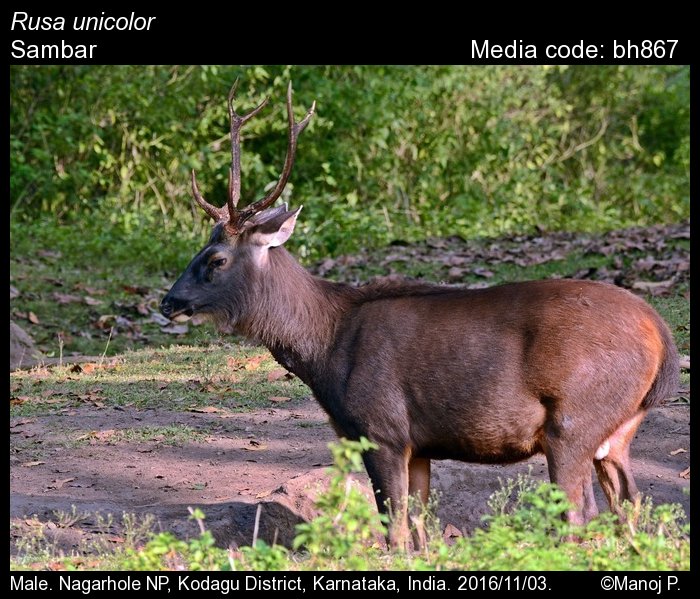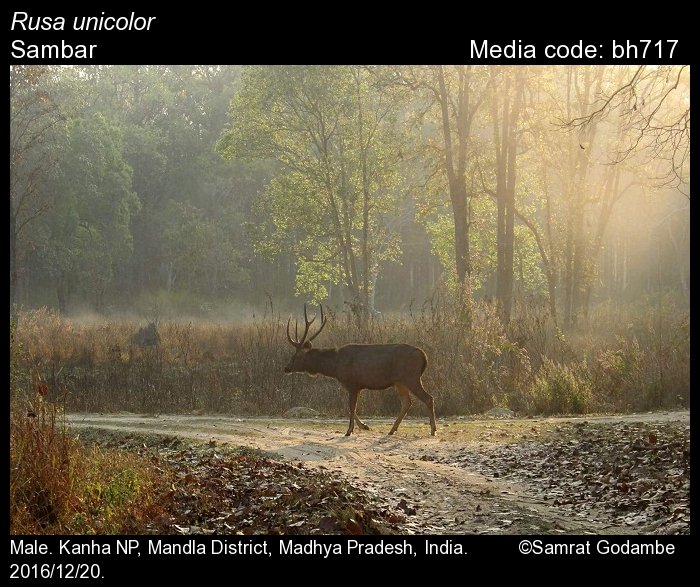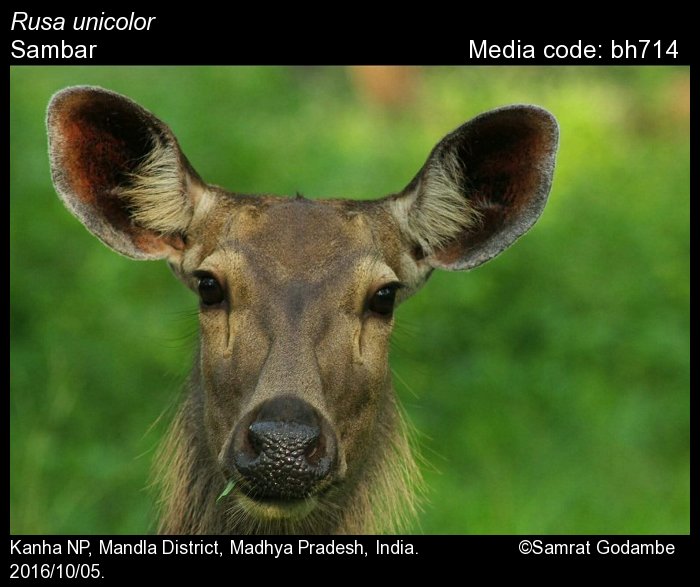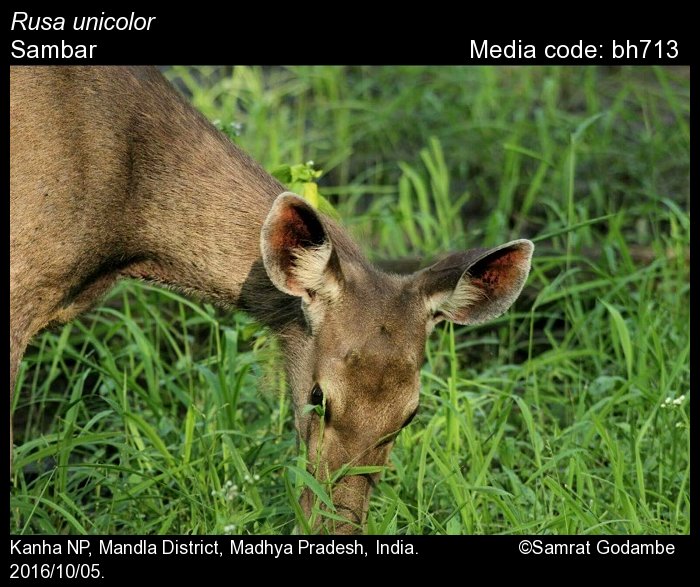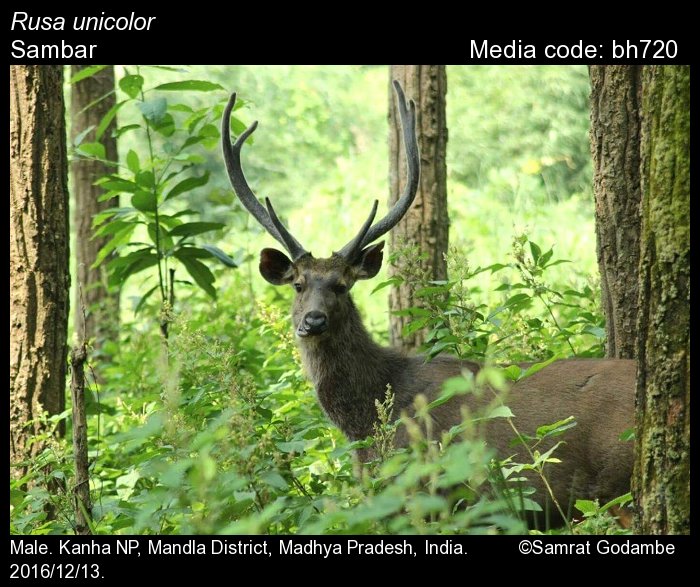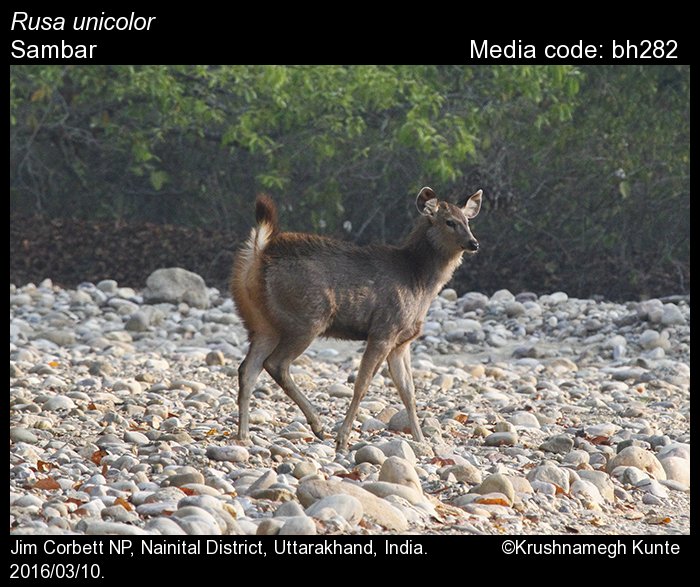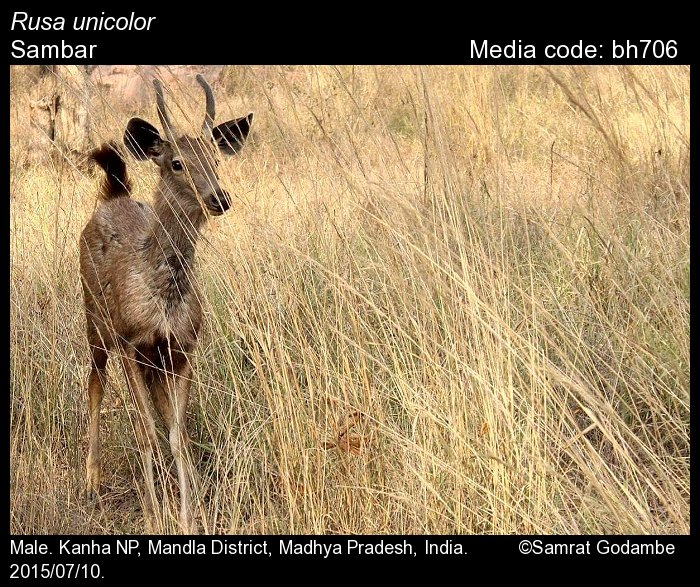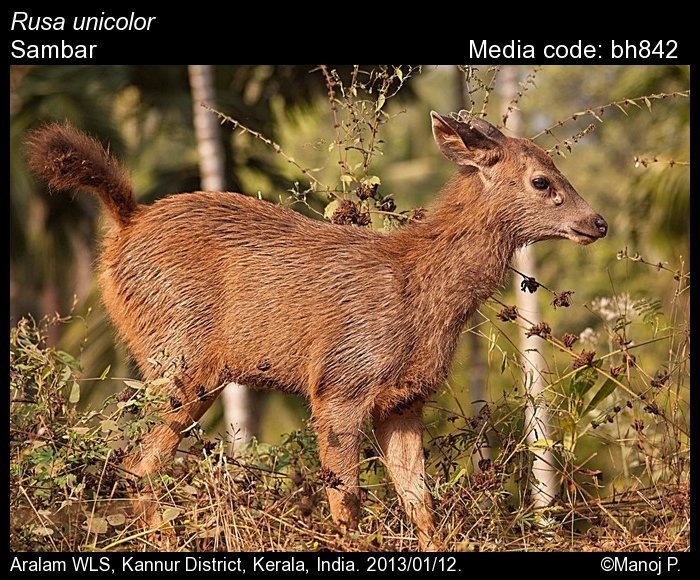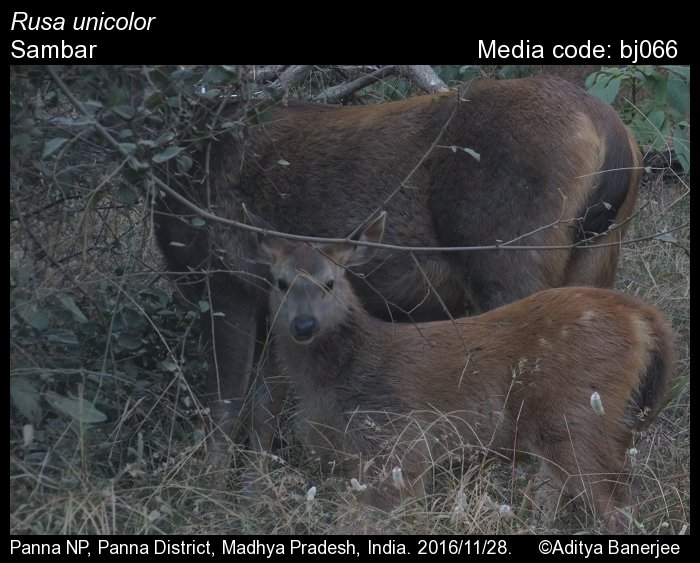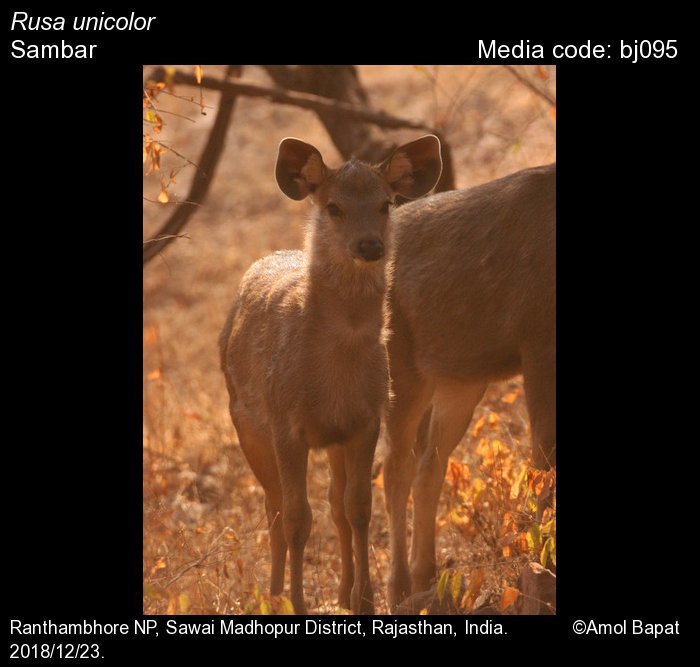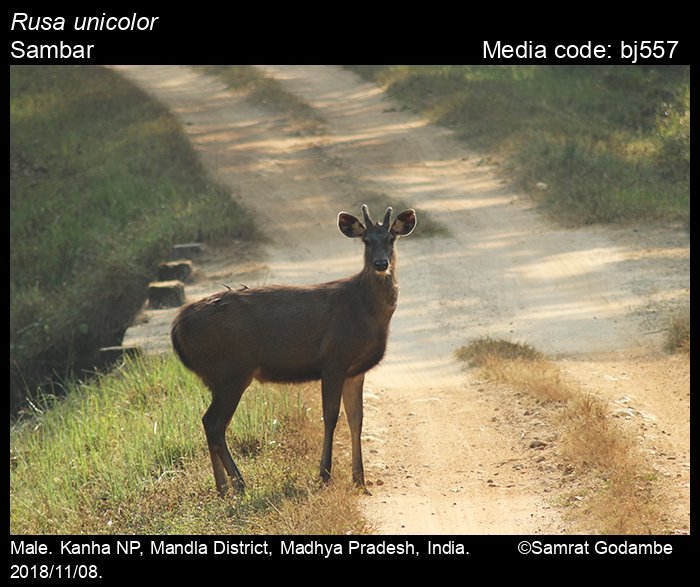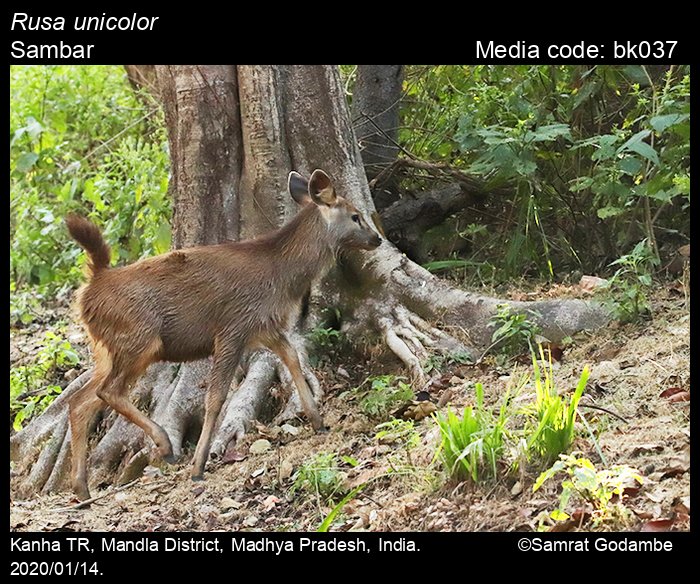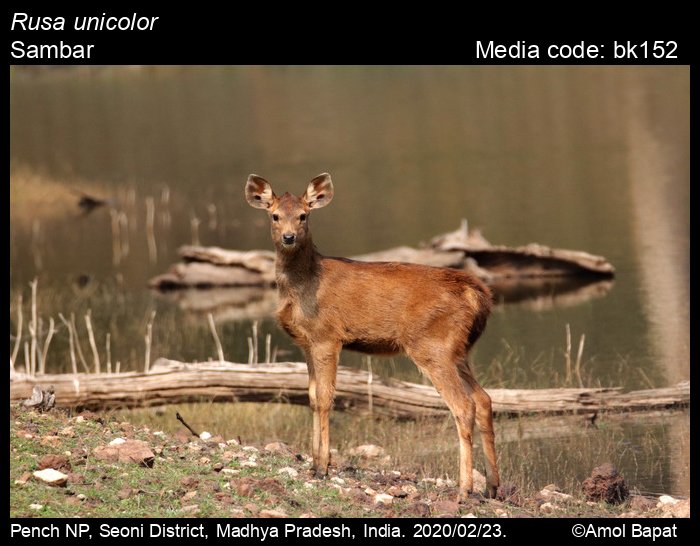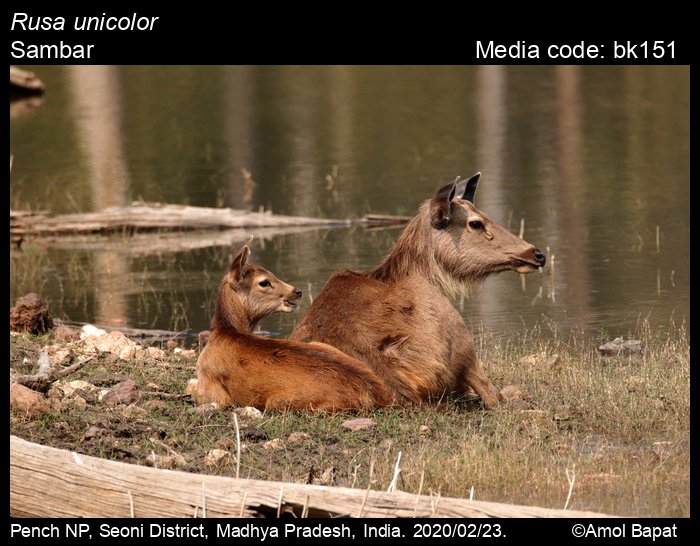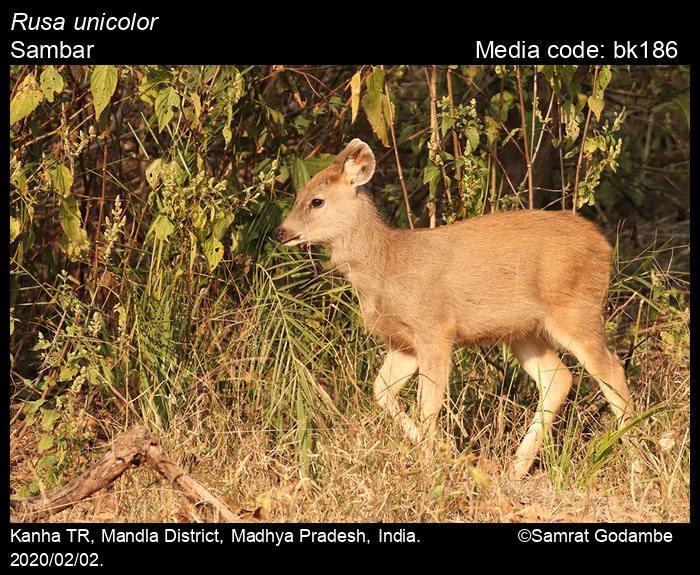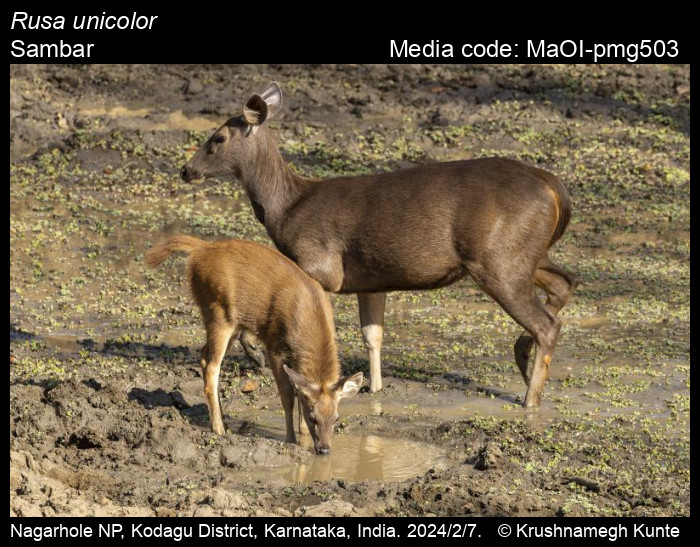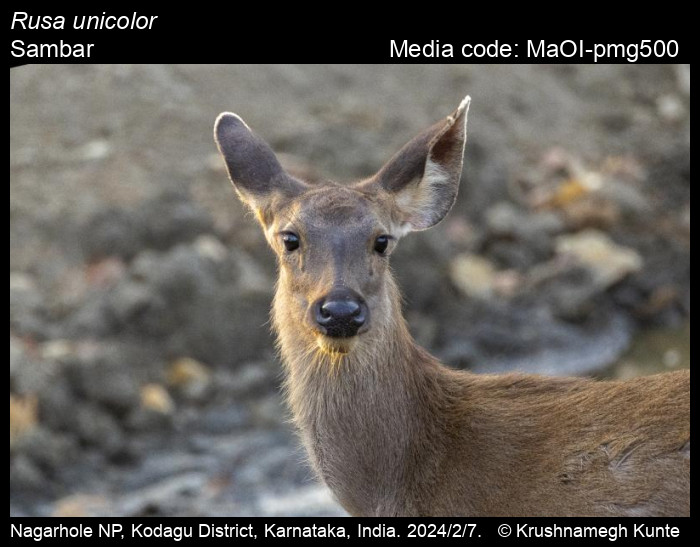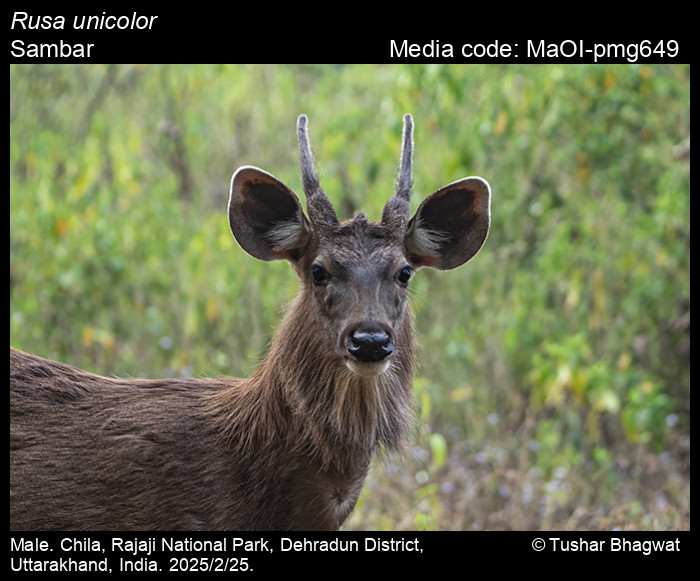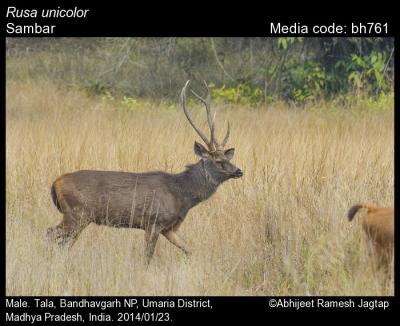
Subspecies in India
Sambar Deer was considered to be a species under genus Cervus, however, molecular studies have shown its placement is better in Rusa. It is subspecis Rusa unicolor unicolor that occurs in India. ![]() This species is listed as Vulnerable in the IUCN Red List of Threatened Species (https://www.iucnredlist.org/).
This species is listed as Vulnerable in the IUCN Red List of Threatened Species (https://www.iucnredlist.org/).
Photo Gallery and Species Biology
Sambar Deer is native to Indian Subcontinent. It occurs in India, Nepal, Bhutan, Burma, Malay Peninsula, Indochina, south China, Taiwan,Sumatra and Borneo. In India, it is widespread and present all the states, except the dry areas of extreme western boundary, Jammu & Kashmir, and Himachal Pradesh. Sambar inhabits a wide variety of habitat including evergreen semi-evergreen, and deciduous forests, grasslands, terai and wetlands. it is crepuscular and nocturnal mainly foraging at night. In daytime it takes to dense cover. It is grazer as well as a browser feeding equally on grasses and leaves, fruits and small branches of trees and shrubs.
Sambar is also introduced in Australia, New Zealand and United States, where hunting is a popular sport.
Conservation Status:![]() This species is listed as Vulnerable in the IUCN Red List of Threatened Species (https://www.iucnredlist.org/).
This species is listed as Vulnerable in the IUCN Red List of Threatened Species (https://www.iucnredlist.org/).
According to IUCN Red List assessment, population of this species is decreasing all over its range. The estimates of its population vary region-wise. It is estimated to be 1 to 10 individuals per sq. km. considering all of its distribution range. Threat to its survival mainly come from habitat loss owing to large-scale agriclutural expansion, overgrazing by livestock, mining, residential and commercial development. Loss of forage (preferred foraging areas and forage species) due to spread of invasive species has caused a decline in many parts. Hunting and trapping for meat, skin, and antlers continue to cause a serious problem to its existence in wild.
| State | Jan | Feb | Mar | Apr | May | Jun | Jul | Aug | Sep | Oct | Nov | Dec | No date |
|---|---|---|---|---|---|---|---|---|---|---|---|---|---|
| Andaman and Nicobar Islands | |||||||||||||
| Andhra Pradesh | |||||||||||||
| Arunachal Pradesh | |||||||||||||
| Assam | 1 | ||||||||||||
| Bihar | |||||||||||||
| Chandigarh | |||||||||||||
| Chhattisgarh | |||||||||||||
| Dadra & Nagar Haveli | |||||||||||||
| Daman & Diu | |||||||||||||
| Delhi | |||||||||||||
| Goa | |||||||||||||
| Gujarat | 1 | ||||||||||||
| Haryana | |||||||||||||
| Himachal Pradesh | |||||||||||||
| Jammu and Kashmir UT | |||||||||||||
| Jharkhand | |||||||||||||
| Karnataka | 1 | 6 | 2 | 2 | 1 | ||||||||
| Kerala | 1 | 4 | 1 | 1 | 1 | ||||||||
| Ladakh UT | |||||||||||||
| Lakshadweep | |||||||||||||
| Madhya Pradesh | 2 | 6 | 1 | 3 | 3 | 2 | 1 | 4 | 2 | ||||
| Maharashtra | 7 | 1 | 1 | ||||||||||
| Manipur | |||||||||||||
| Meghalaya | |||||||||||||
| Mizoram | |||||||||||||
| Nagaland | |||||||||||||
| Odisha | |||||||||||||
| Paschimbanga | |||||||||||||
| Pondicherry | |||||||||||||
| Punjab | |||||||||||||
| Rajasthan | 2 | 1 | 1 | ||||||||||
| Sikkim | |||||||||||||
| Tamil Nadu | 5 | ||||||||||||
| Tripura | |||||||||||||
| Uttar Pradesh | |||||||||||||
| Uttarakhand | 1 | ||||||||||||
| West Bengal | |||||||||||||
| Total | 6 | 17 | 8 | 9 | 5 | 3 | 2 | 2 | 8 | 5 |
Page citation
Anonymous 2025. Rusa unicolor Kerr, 1792 – Sambar. In Bayani, A., R. Chakravarty, and K. Kunte (Editors) (Chief Editors). Butterflies of India, v. 1.13. Published by the Indian Foundation for Butterflies. URL: https://www.mammalsofindia.org/rusa-unicolor, accessed 2025/11/26.
